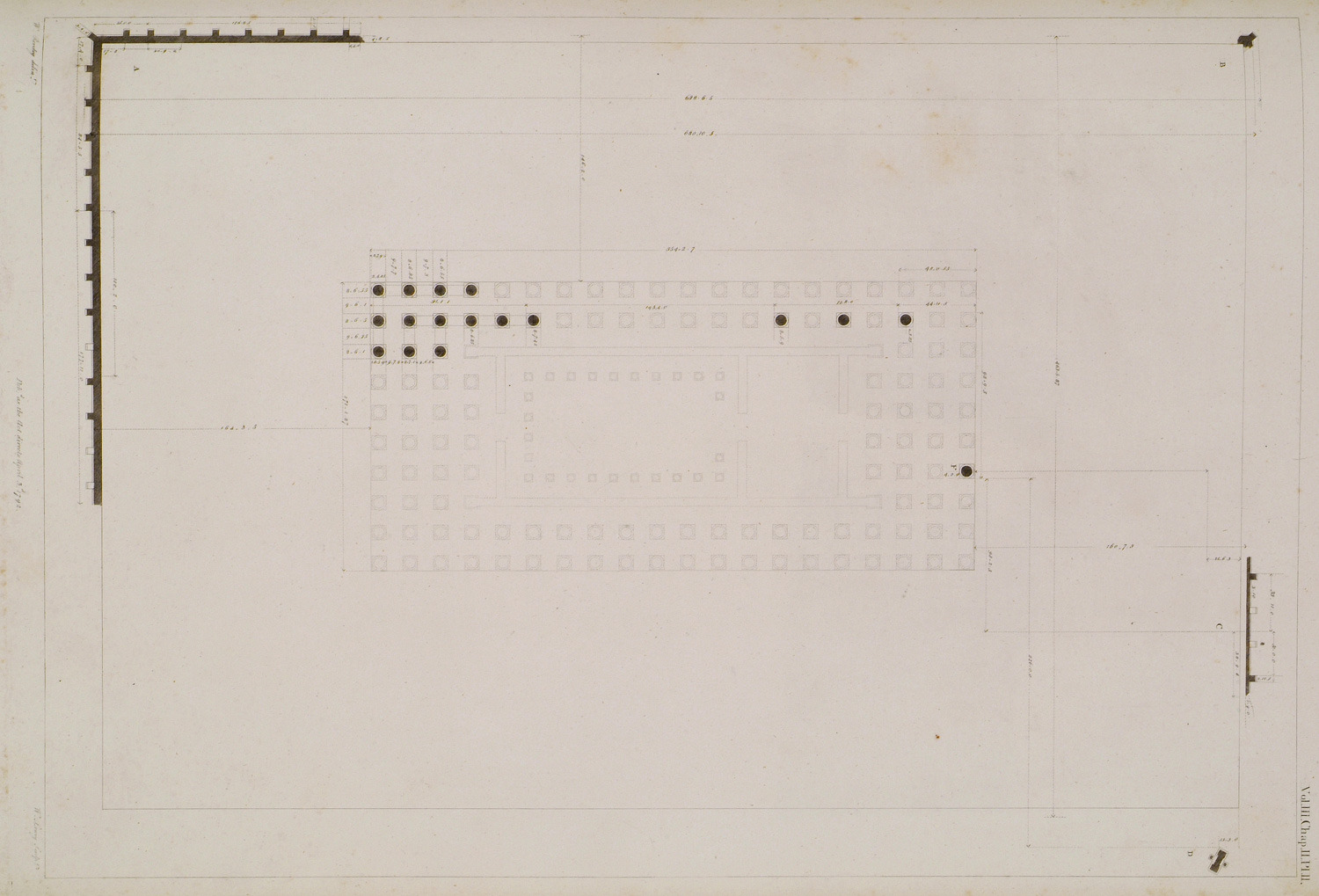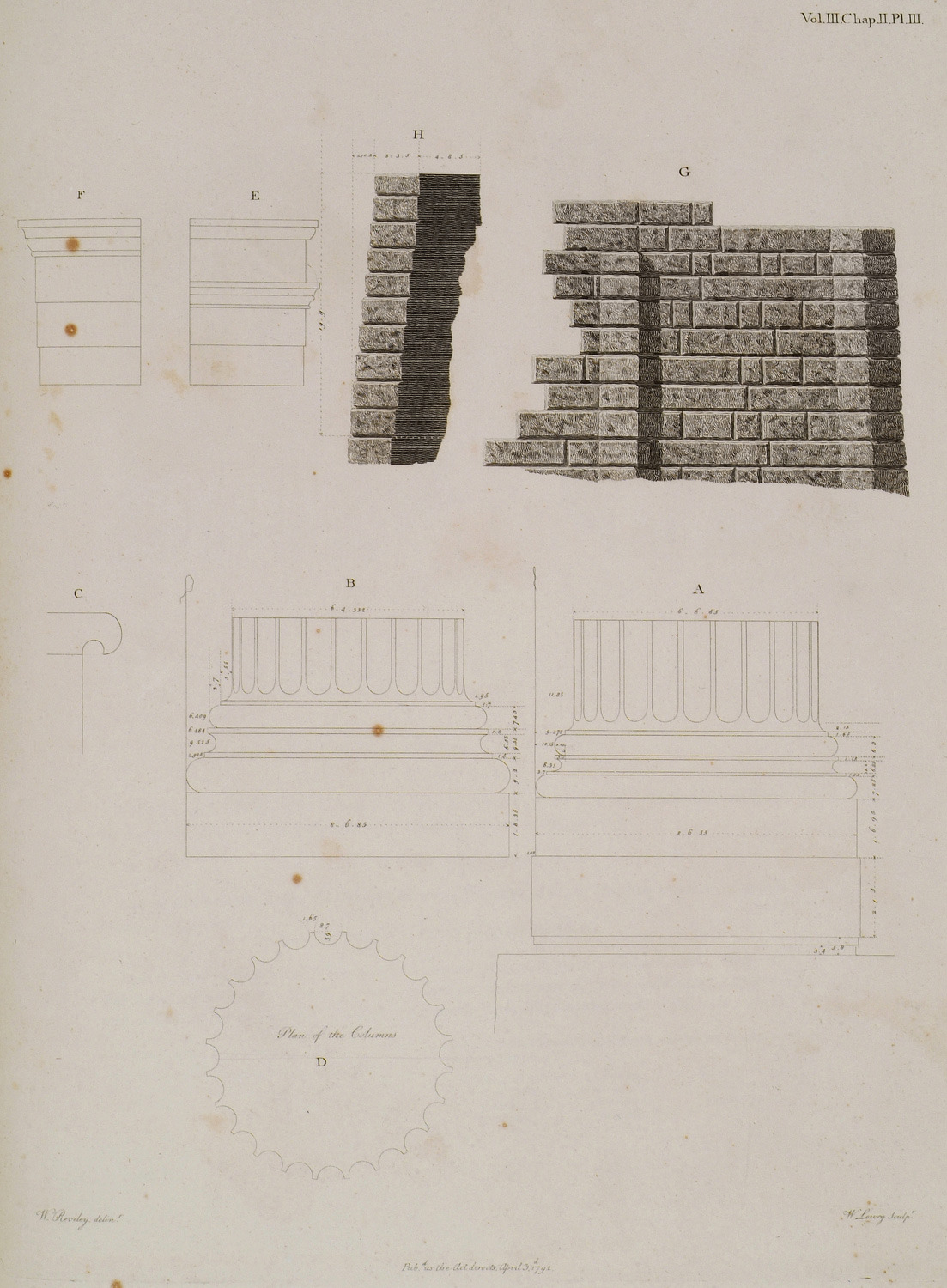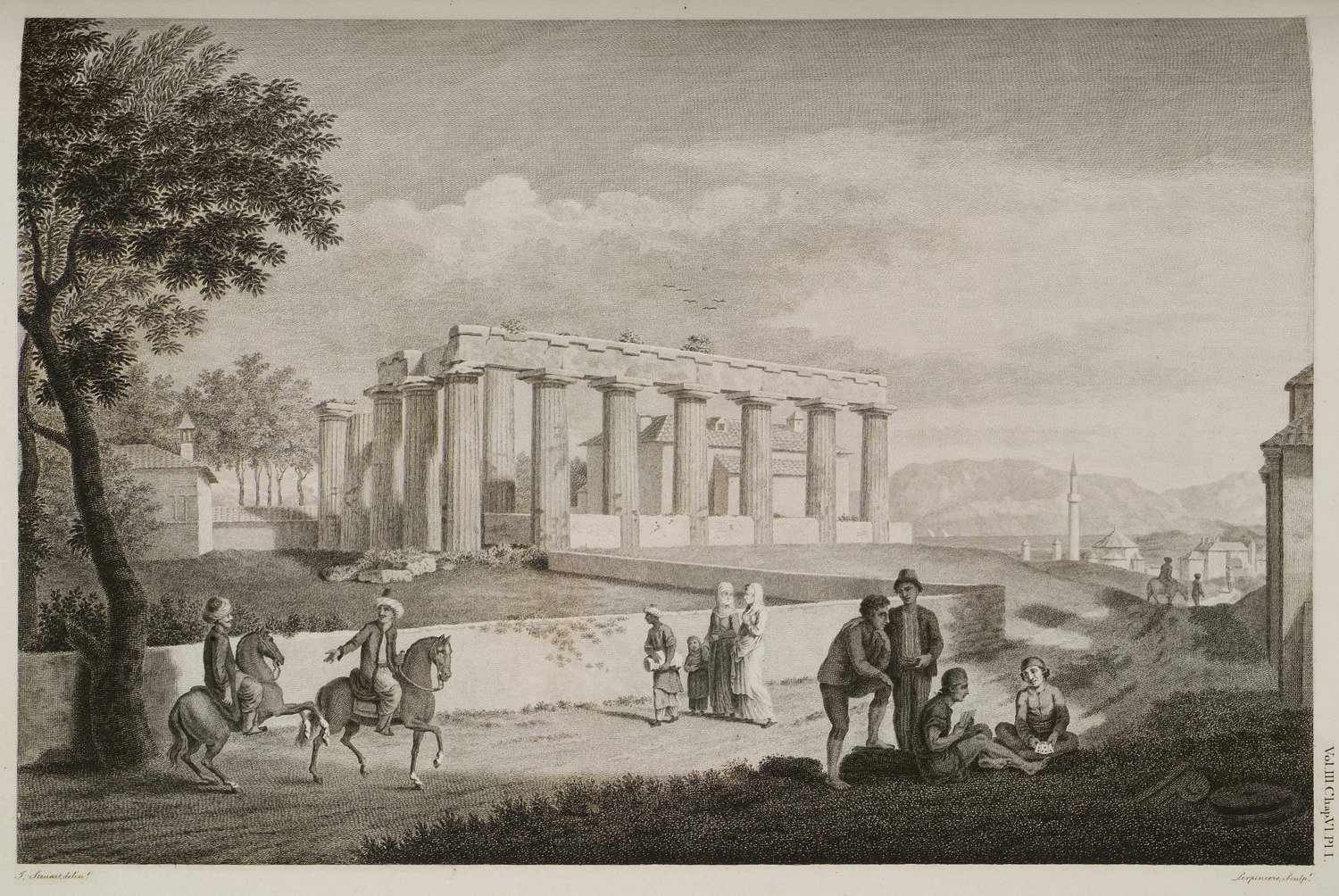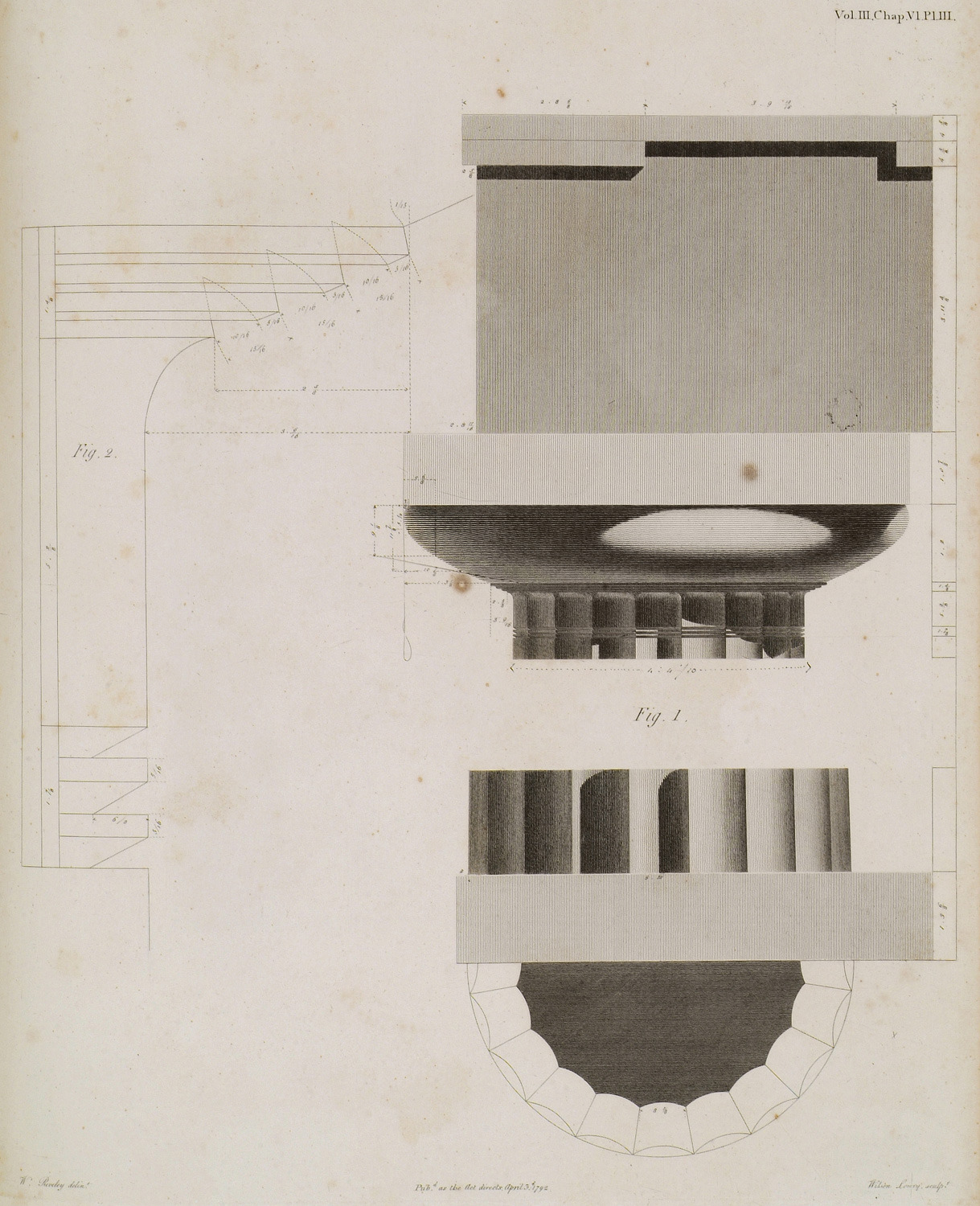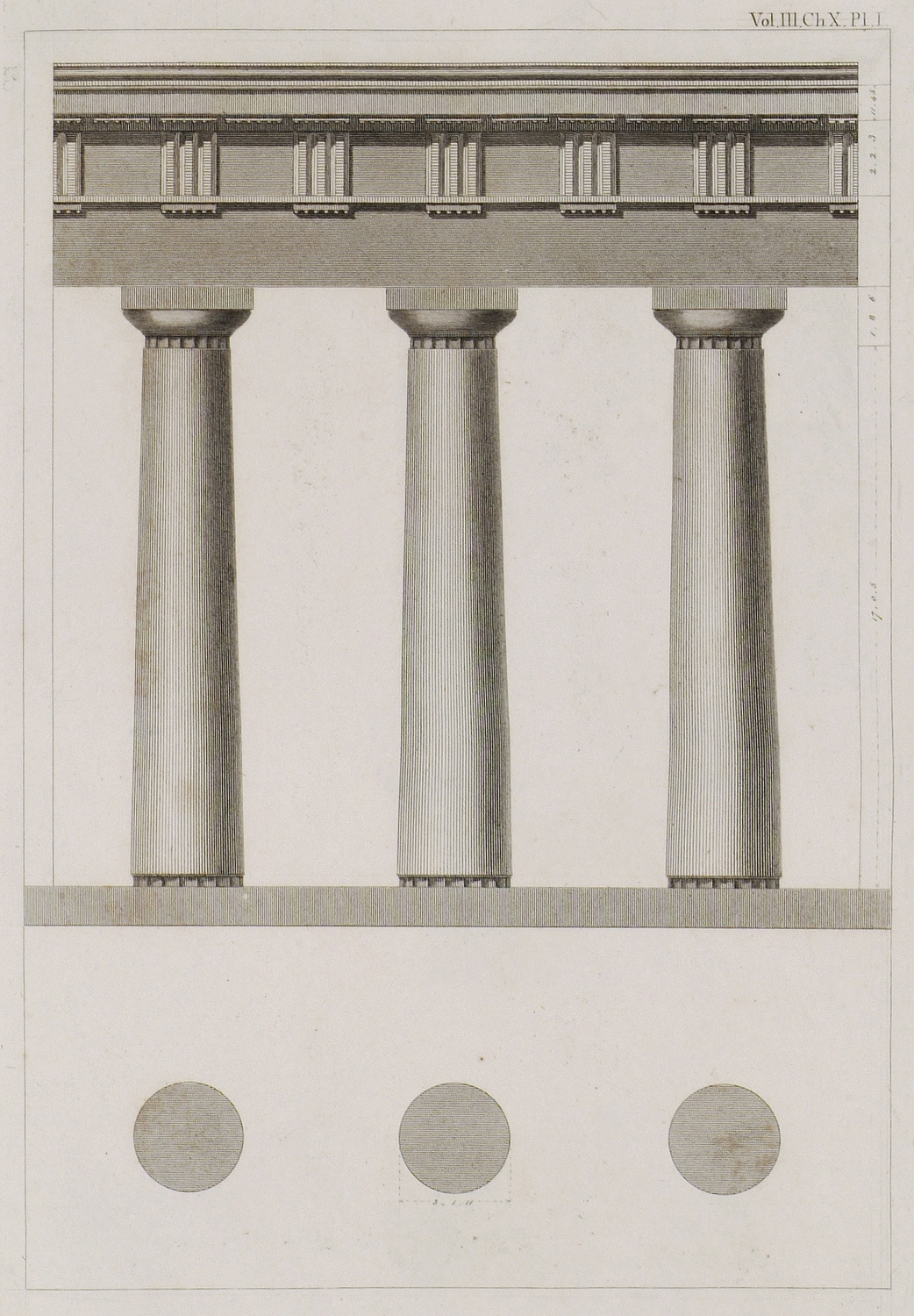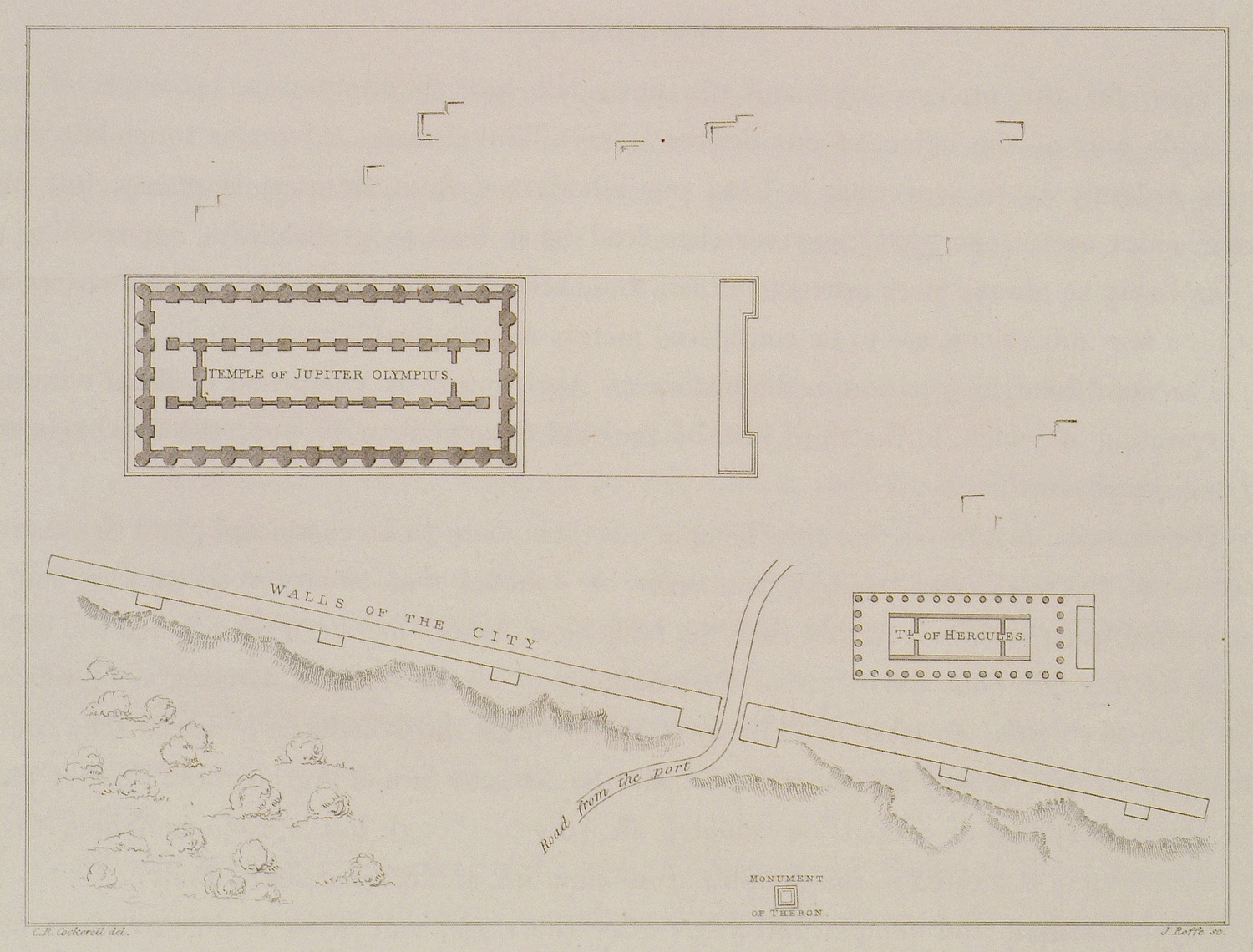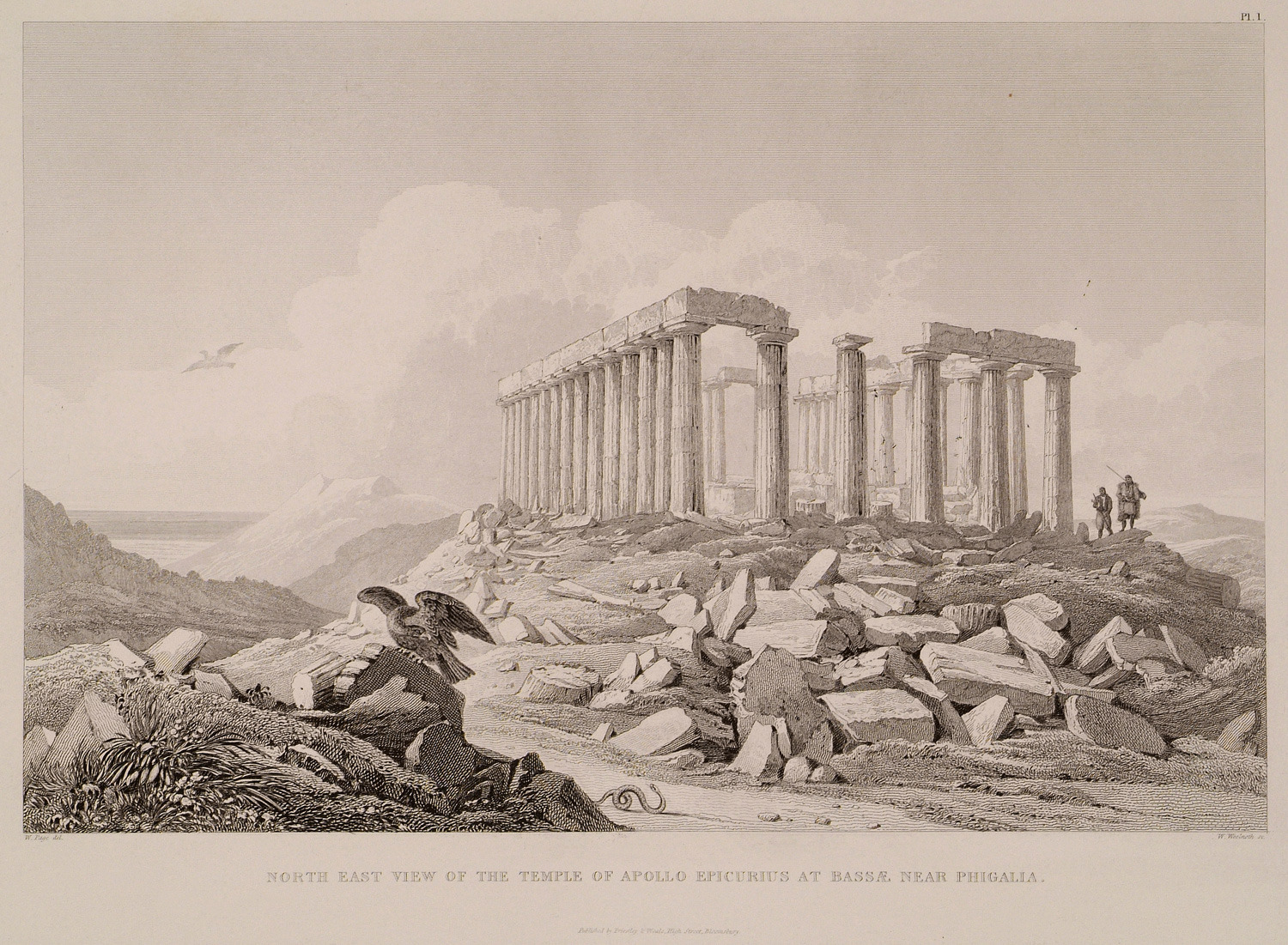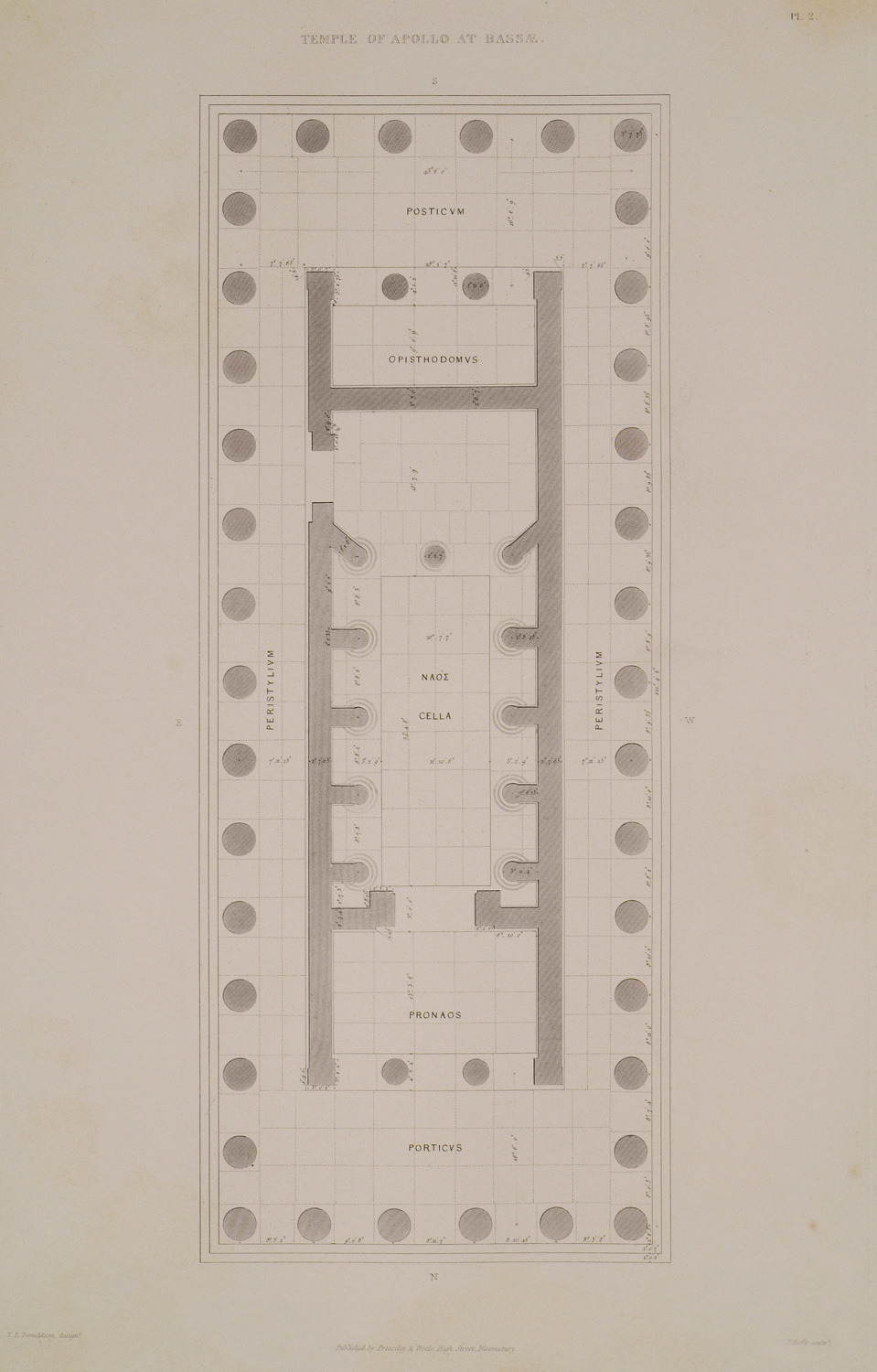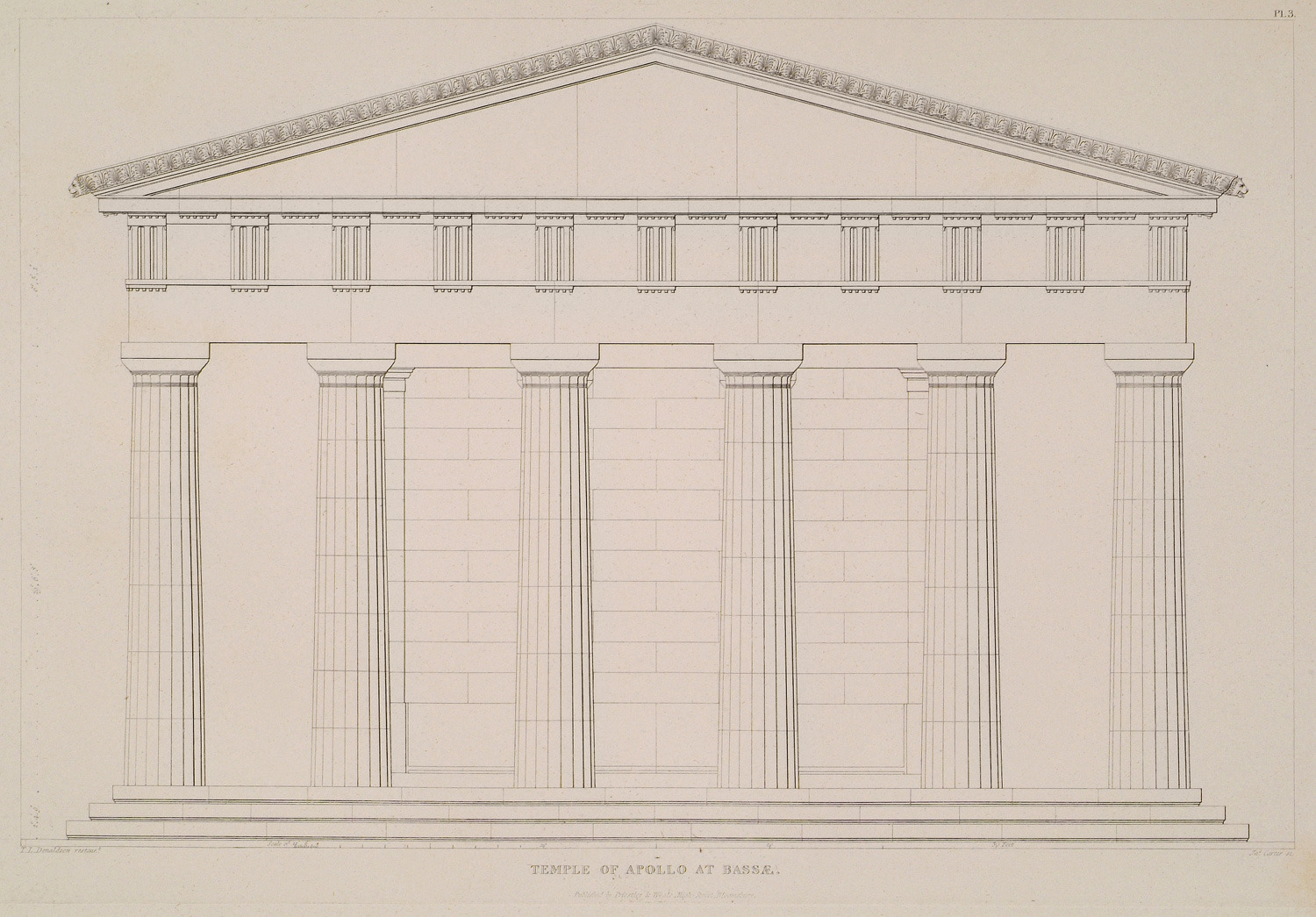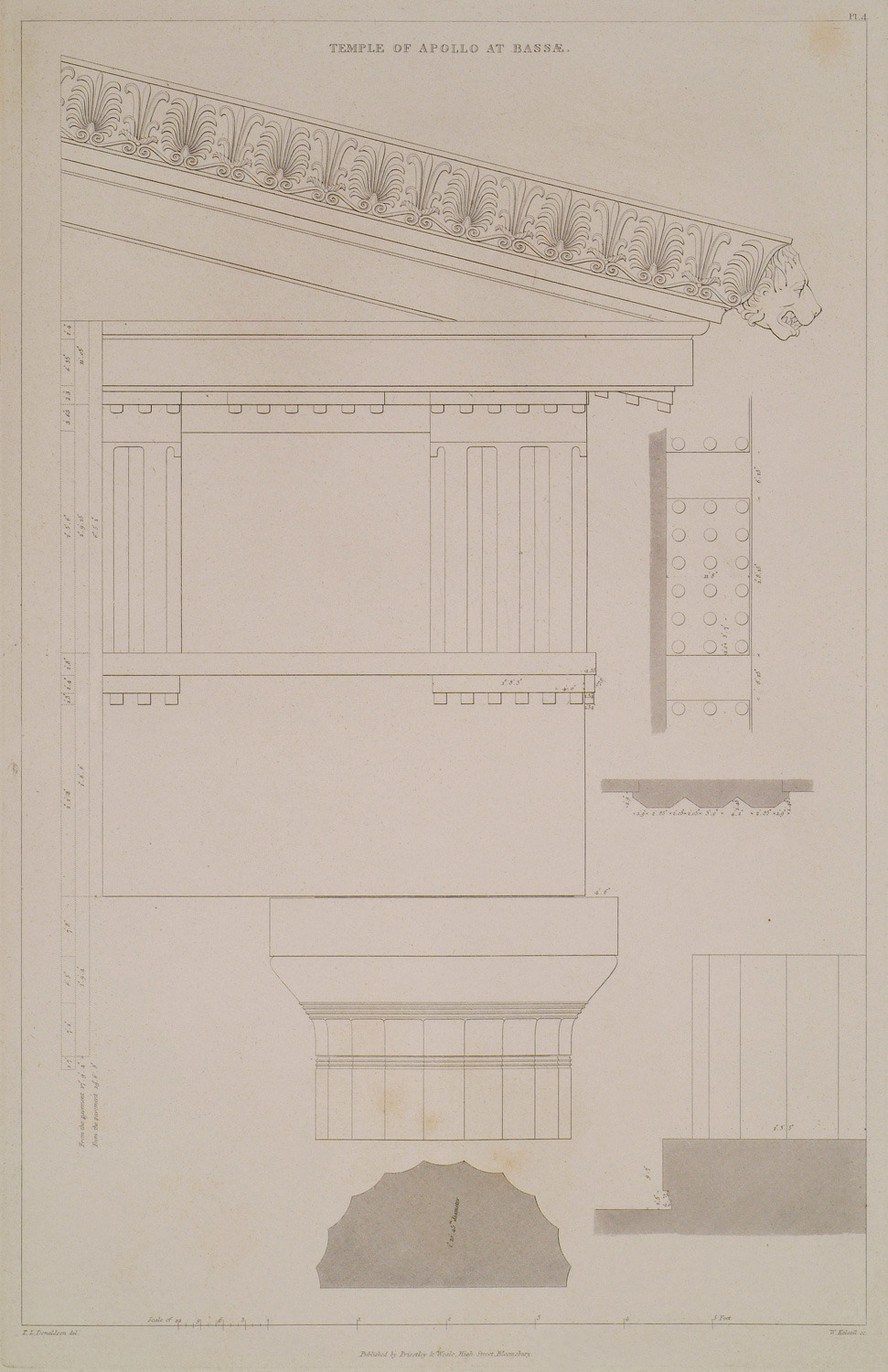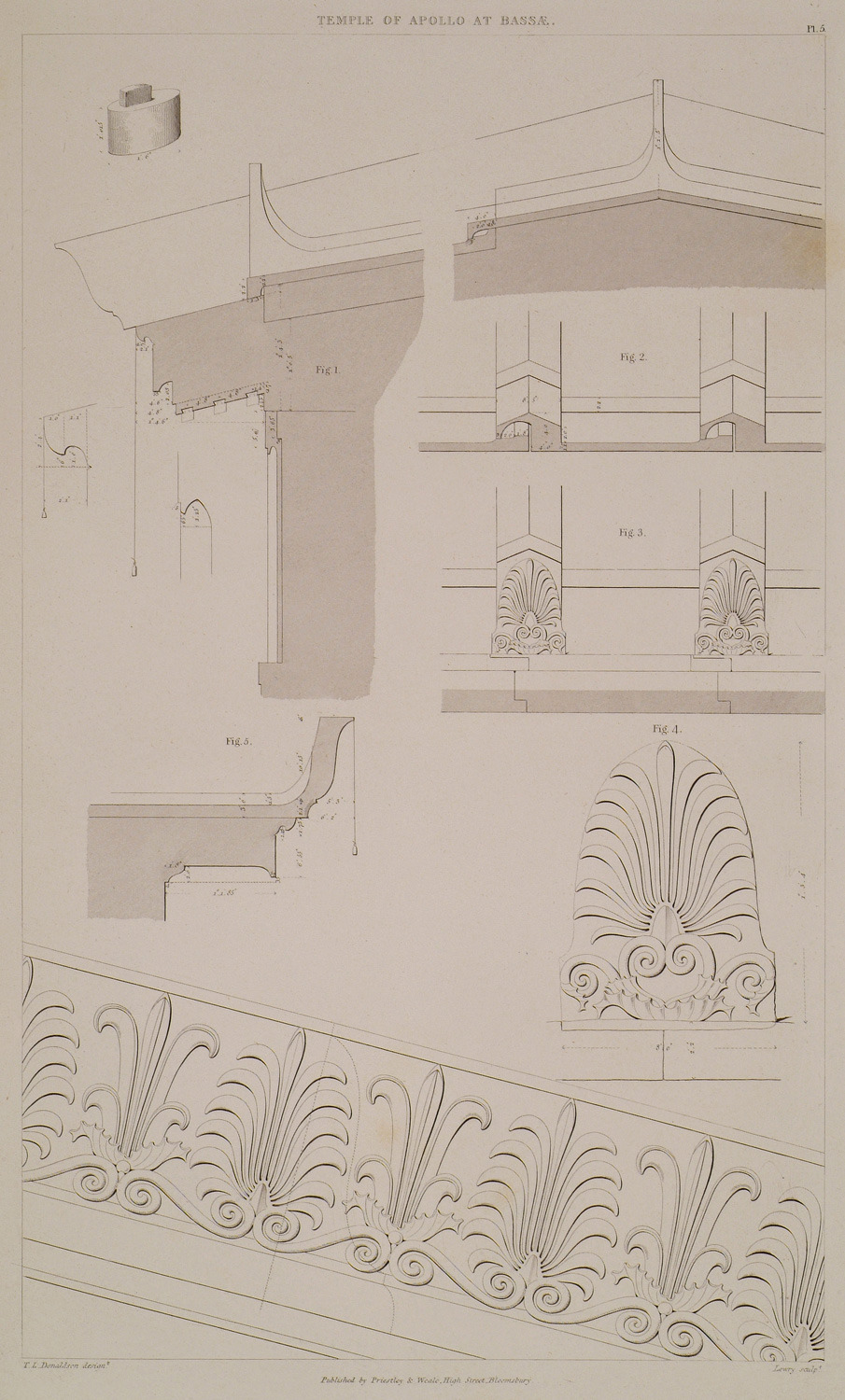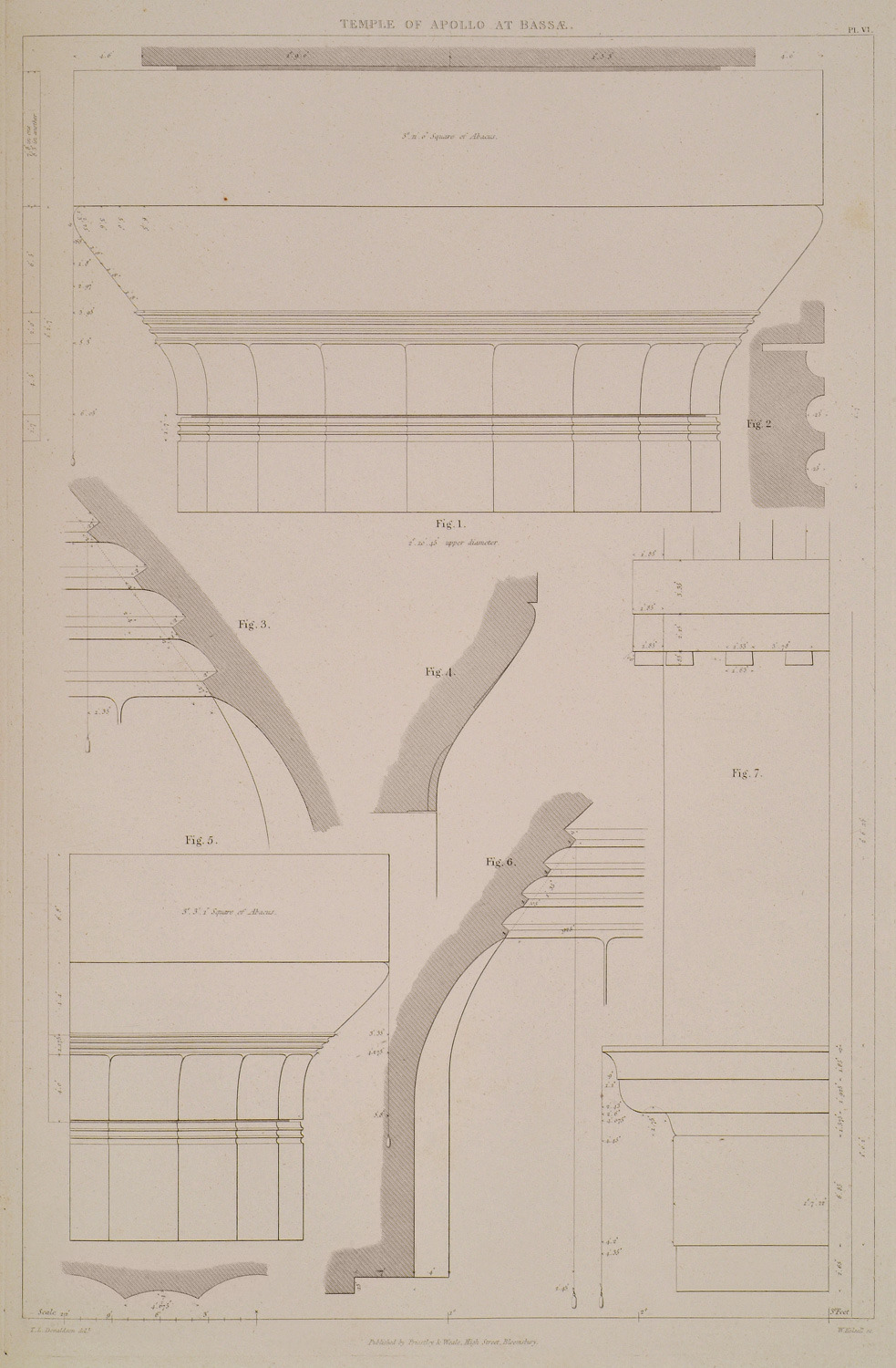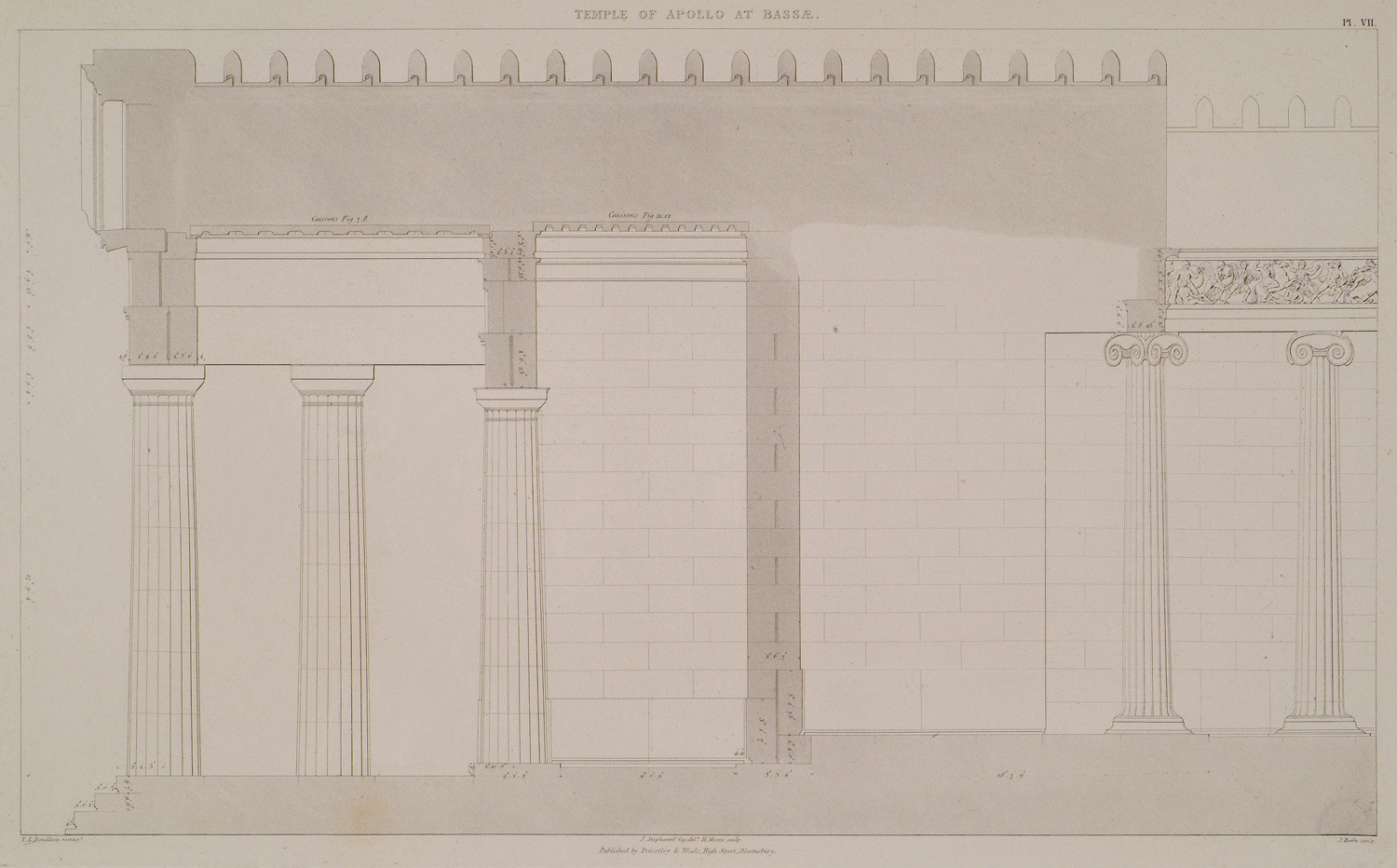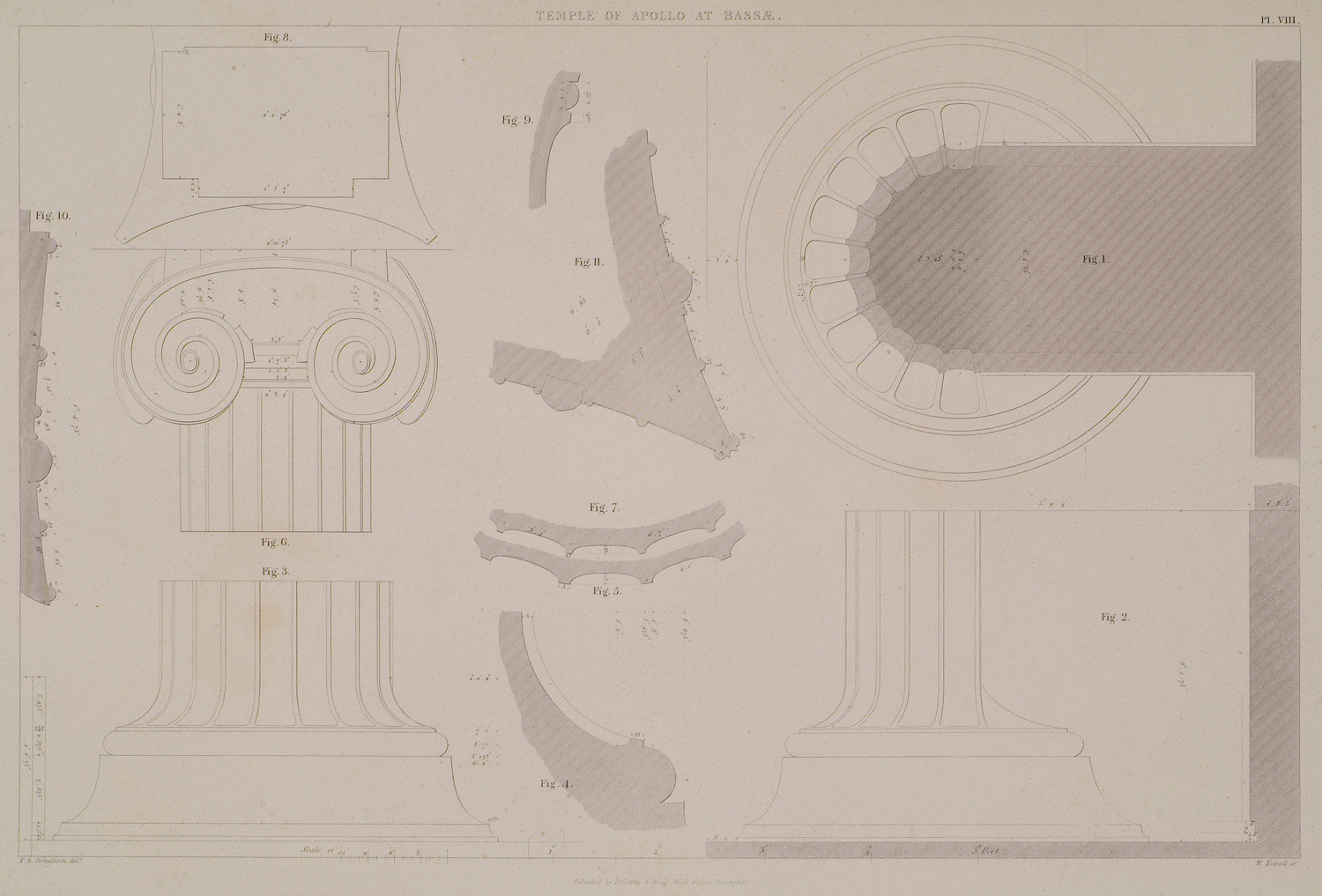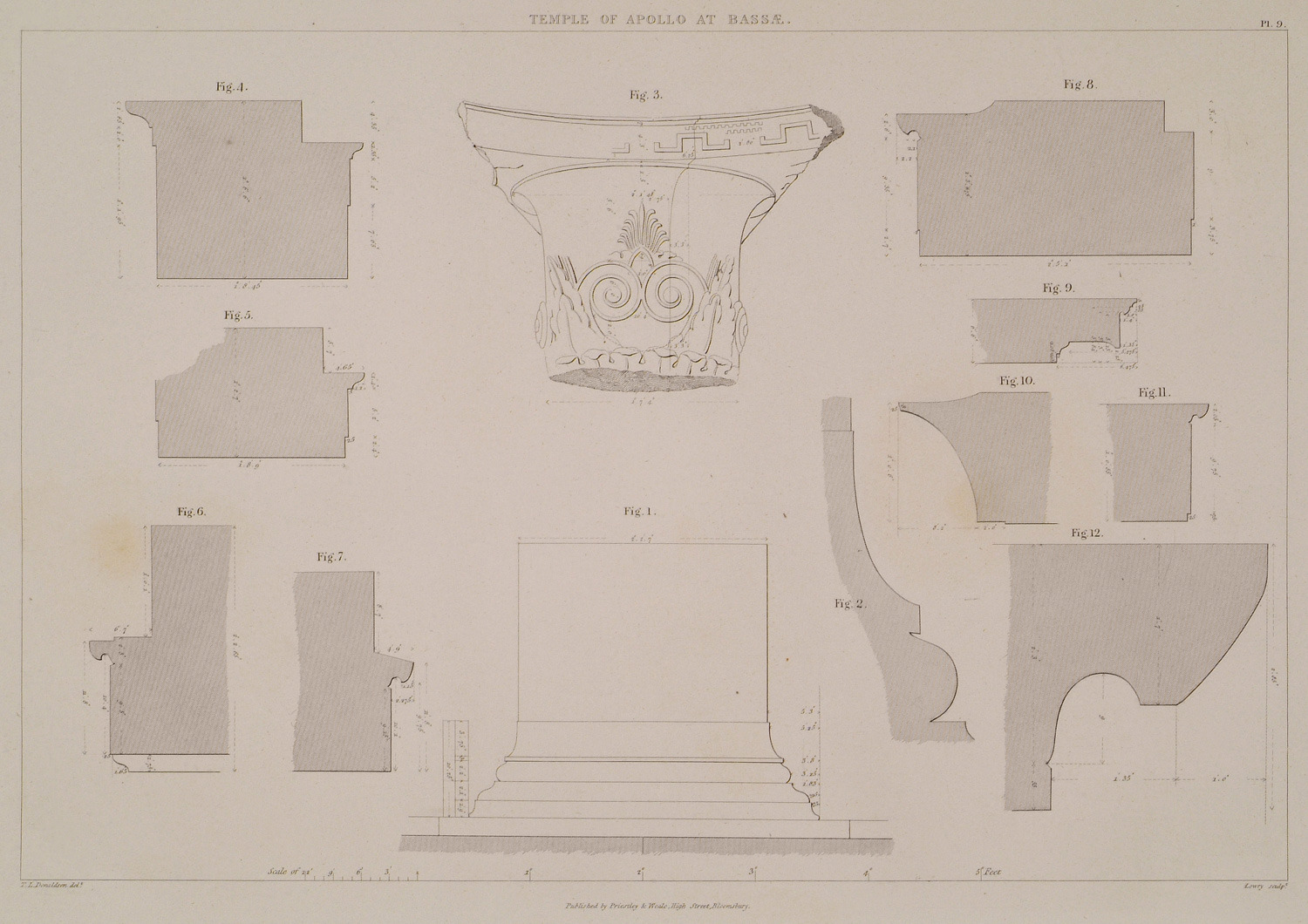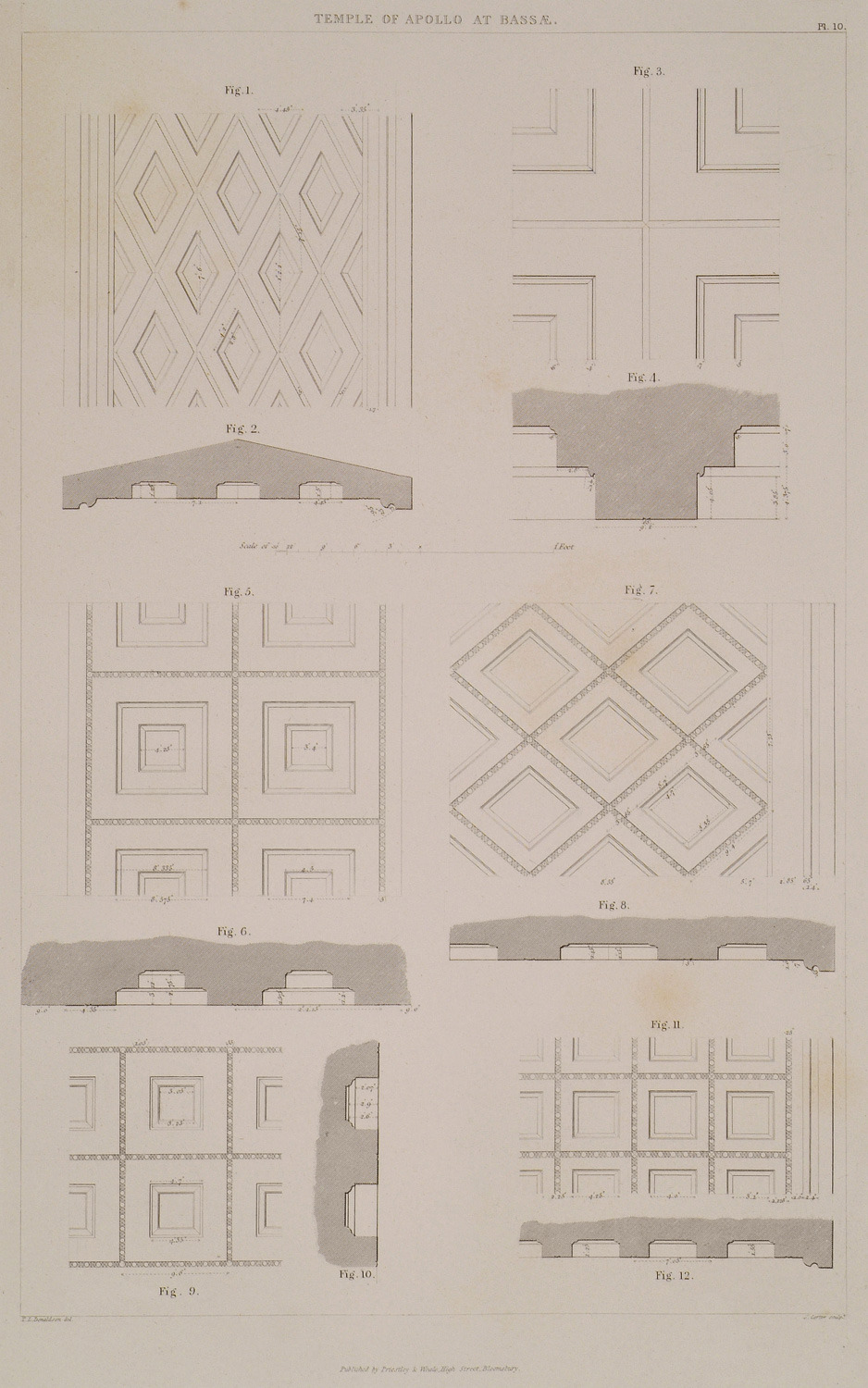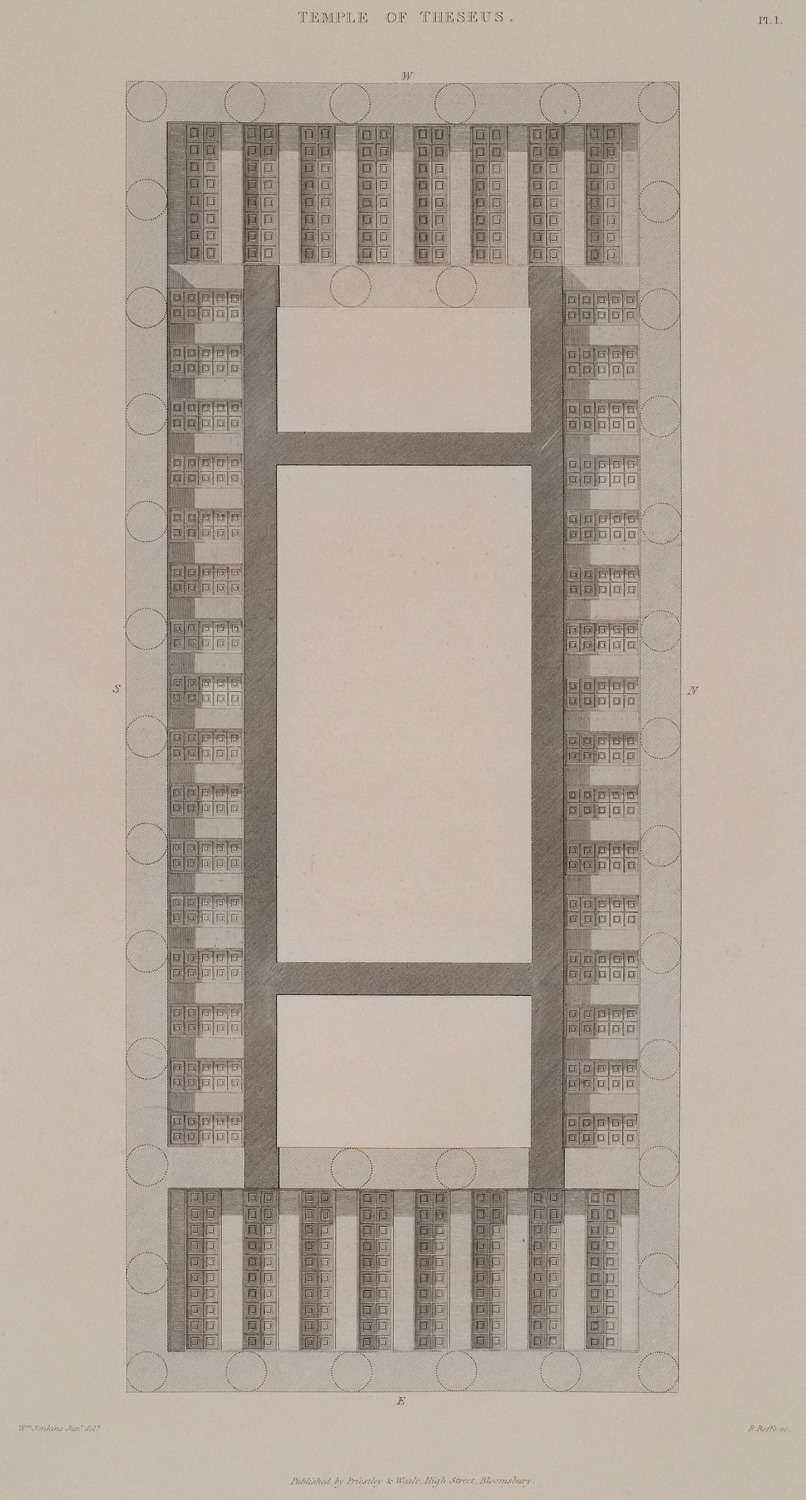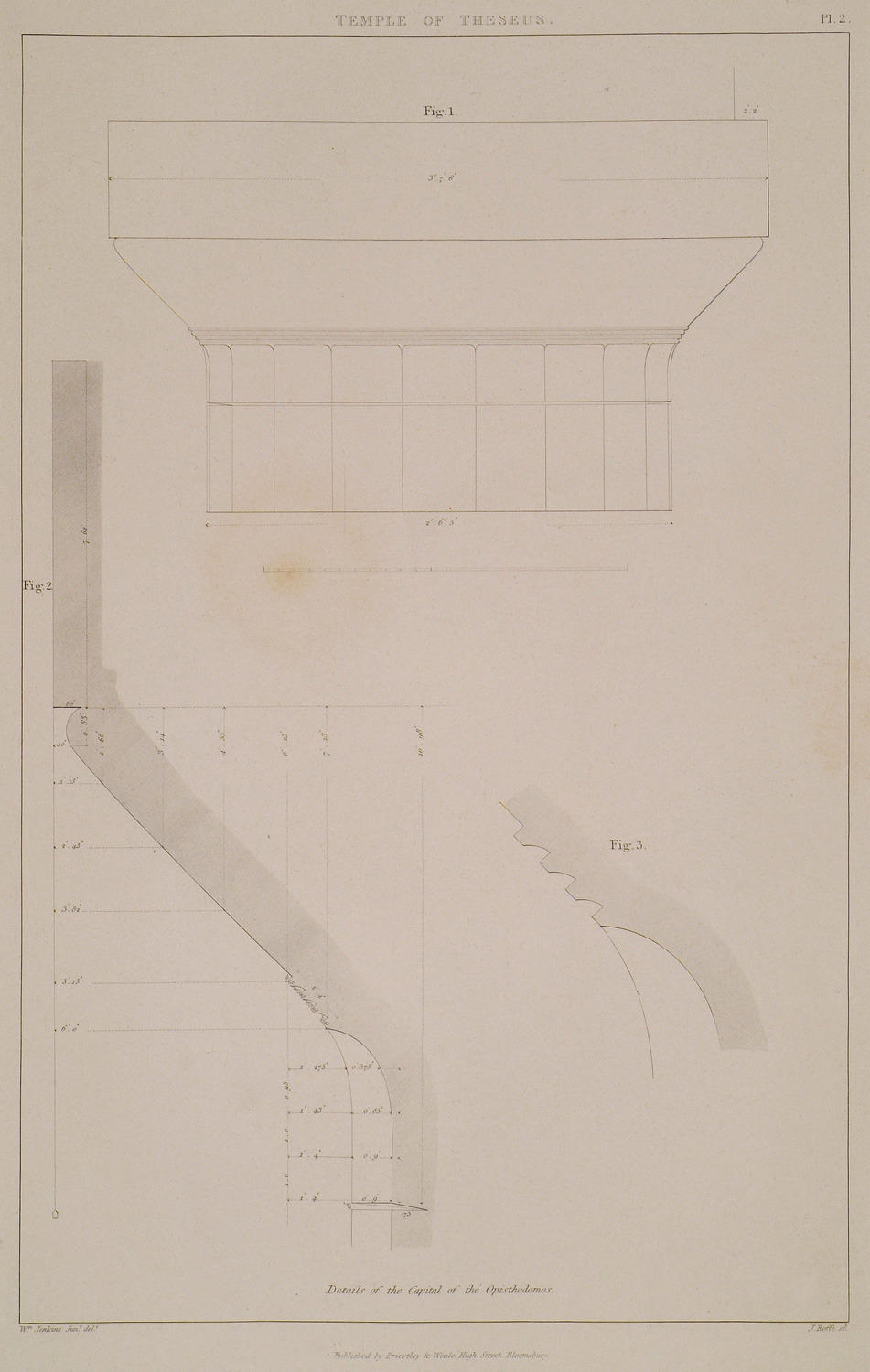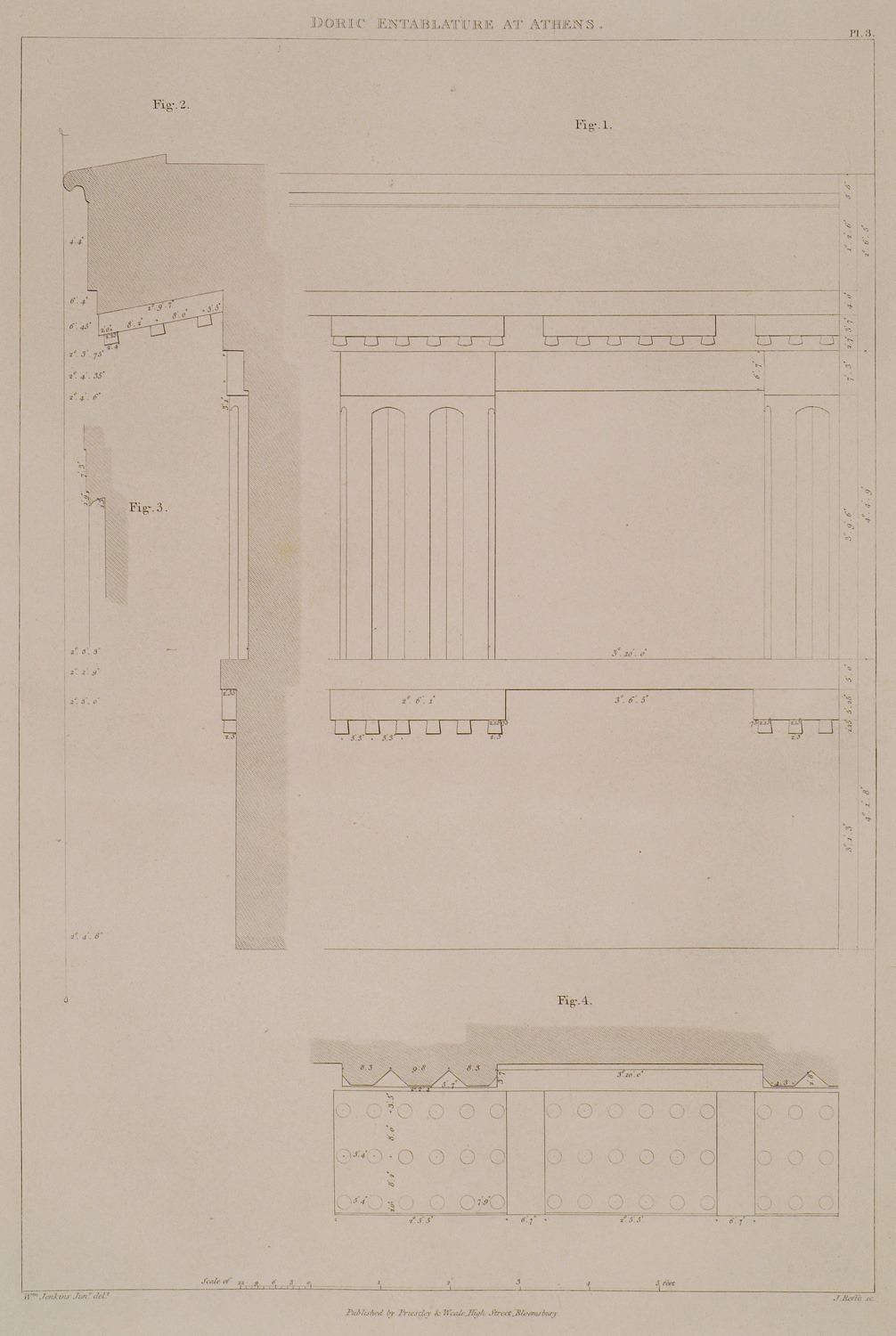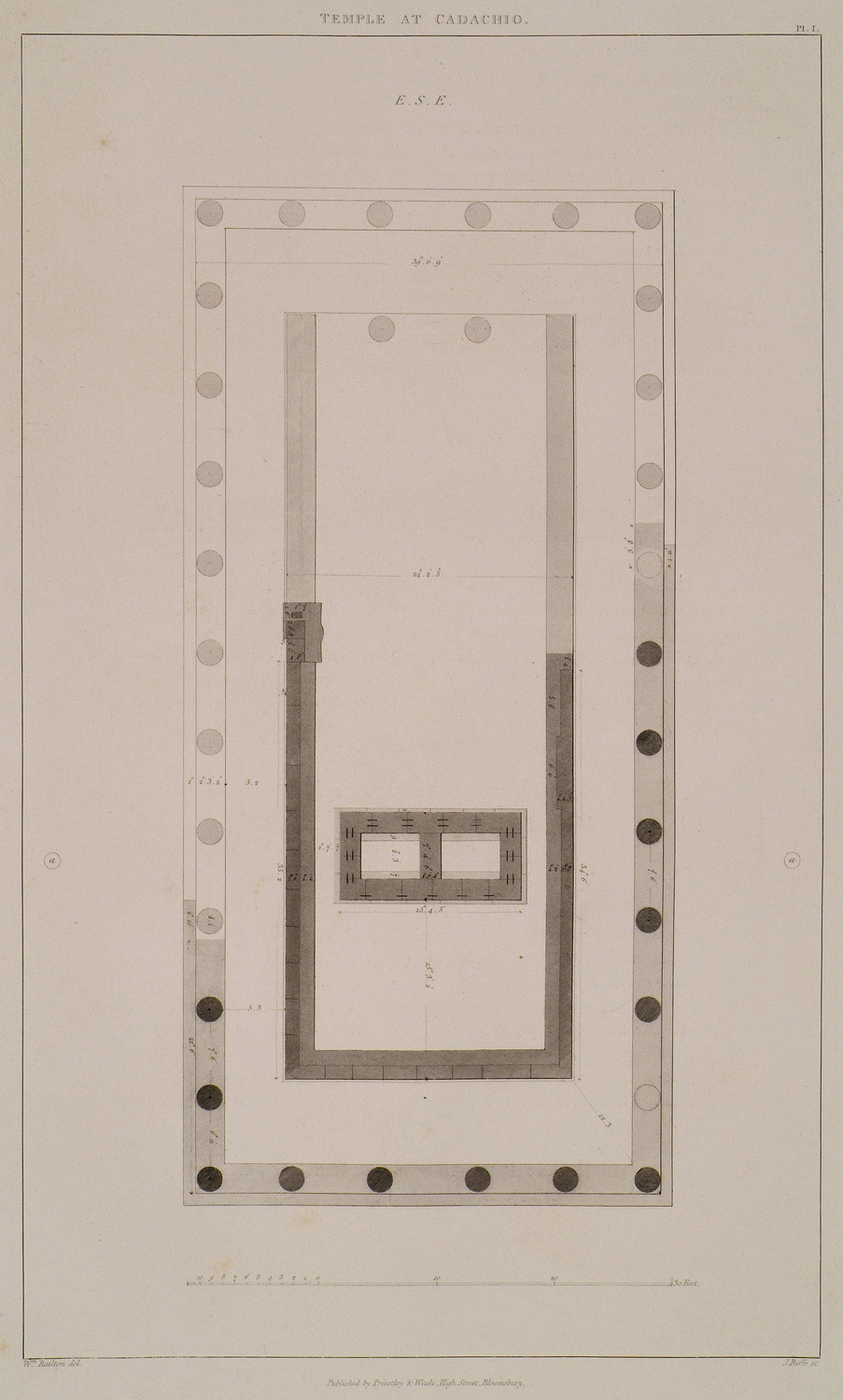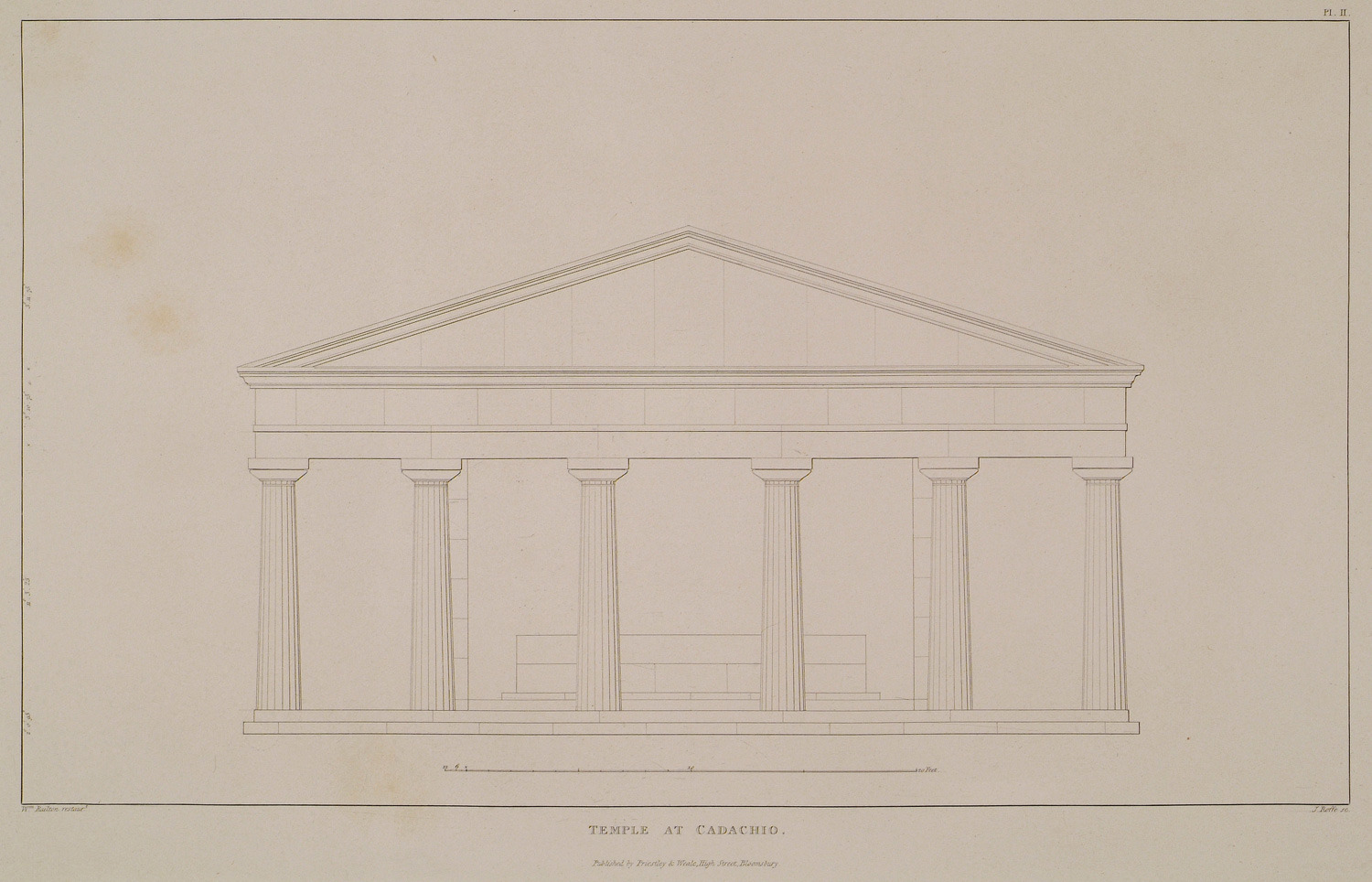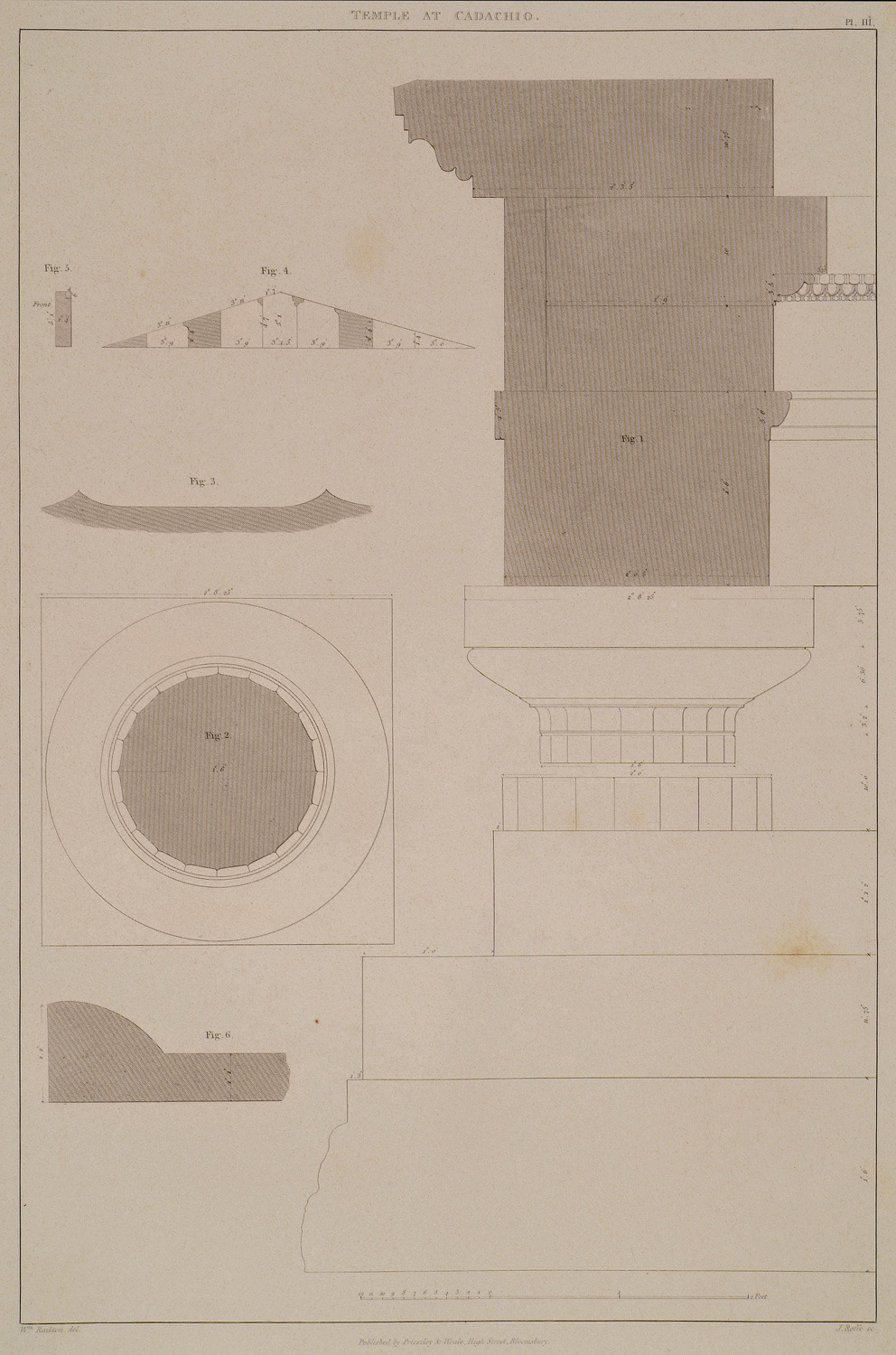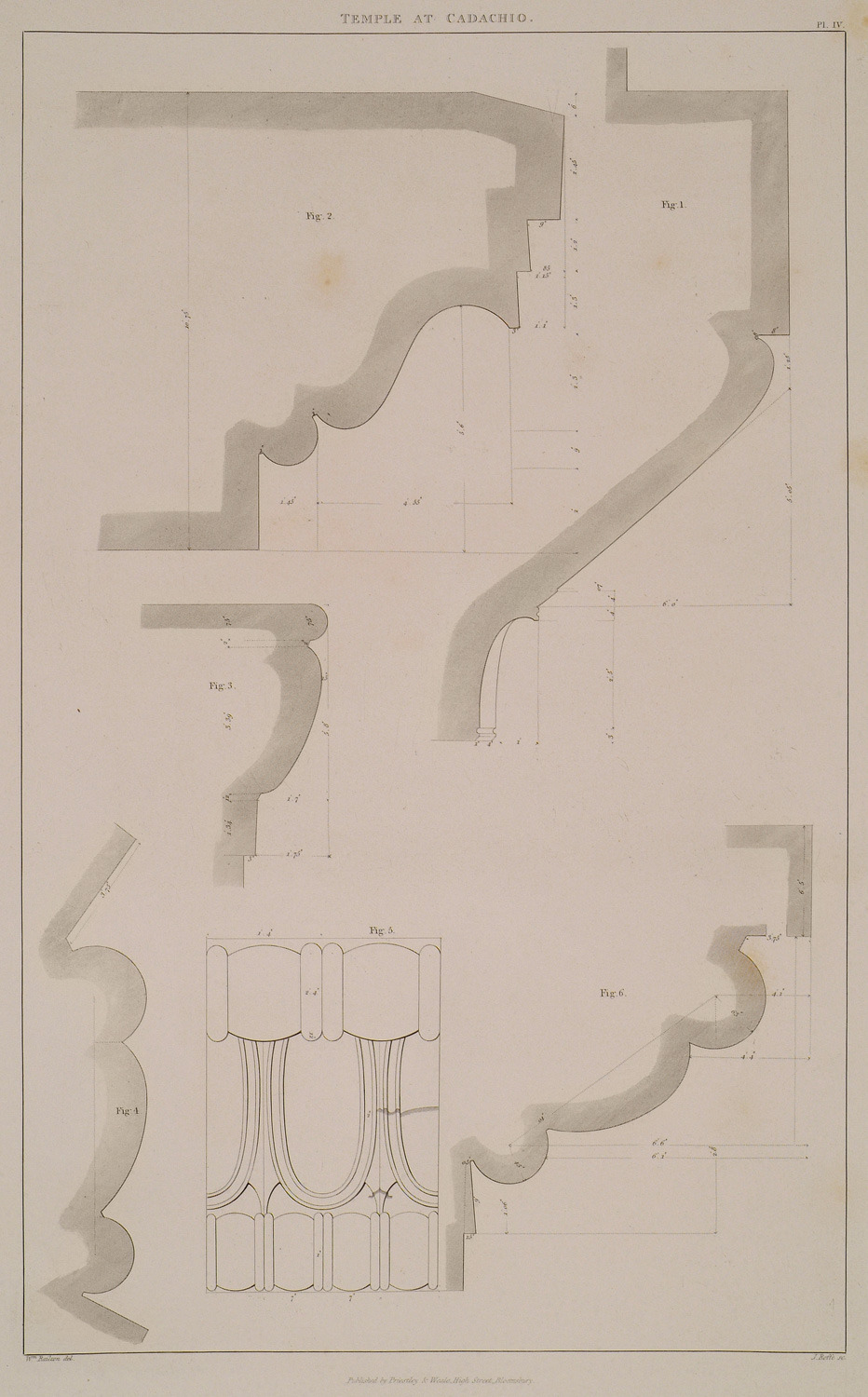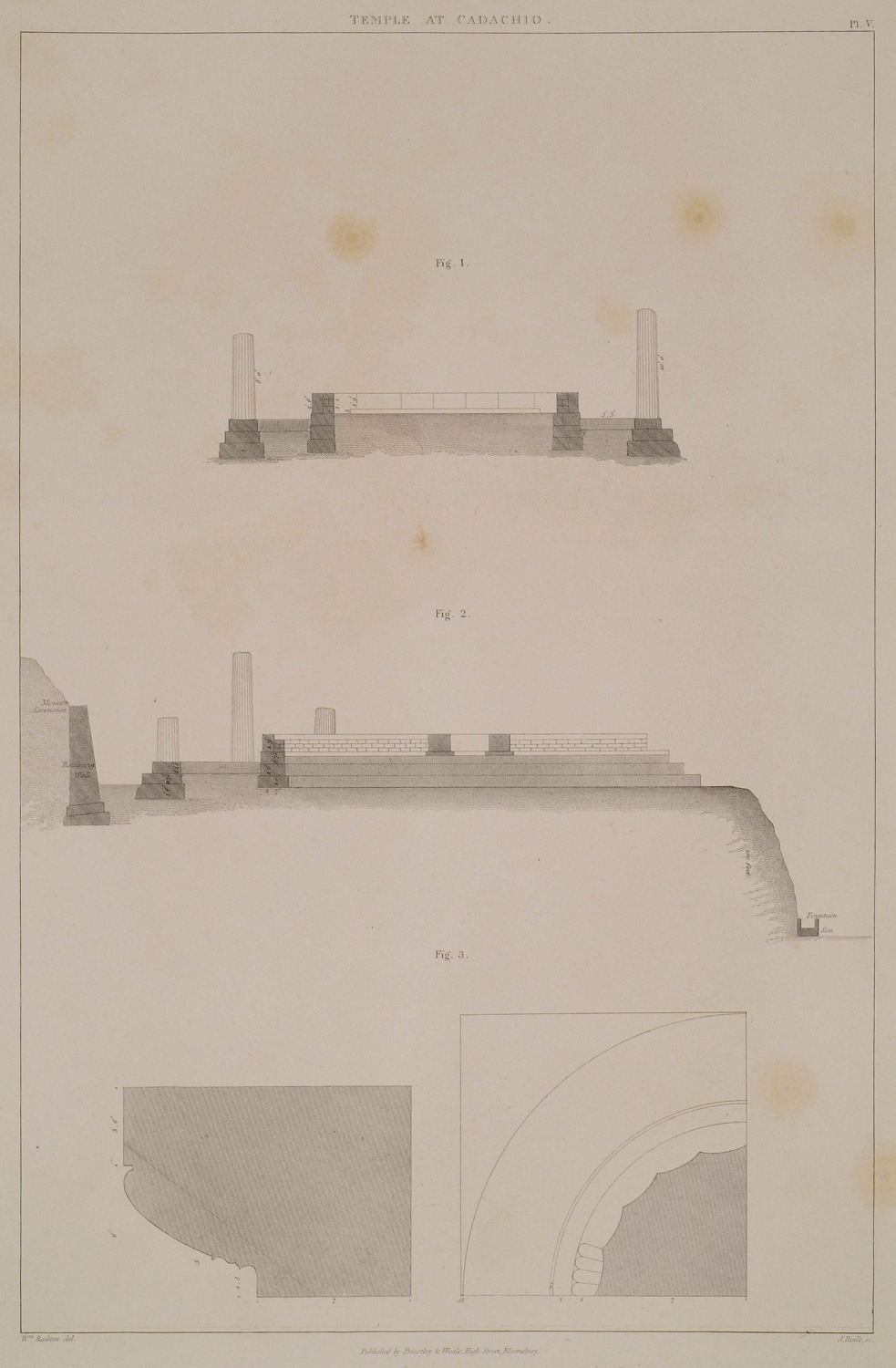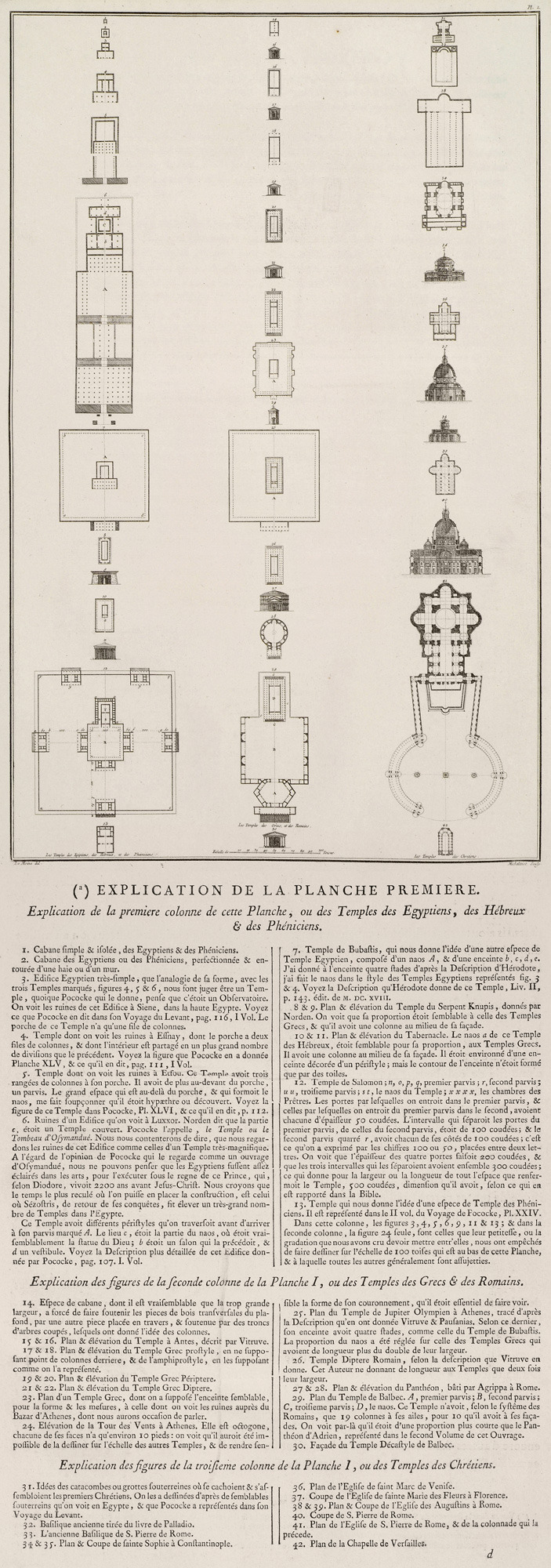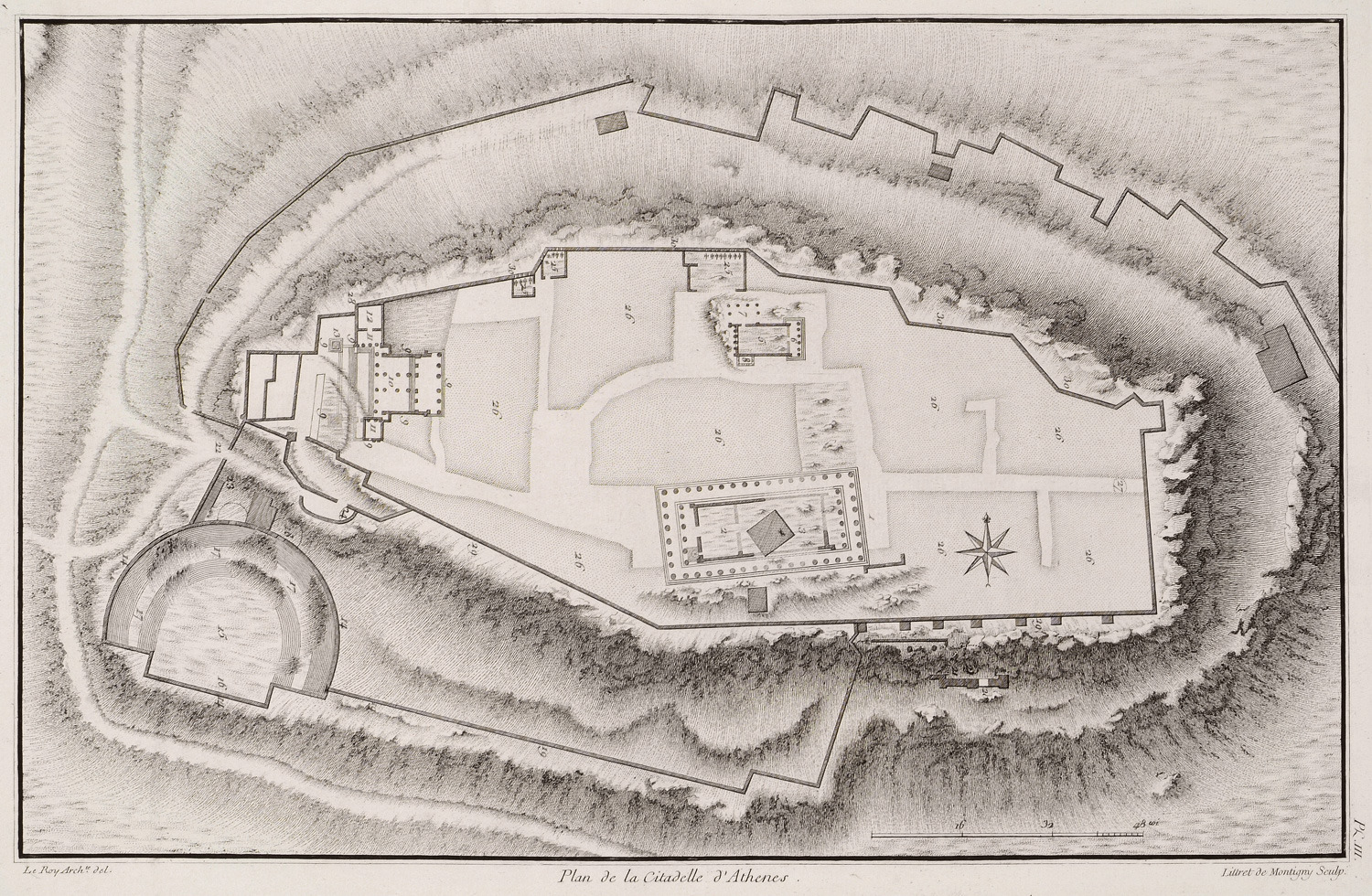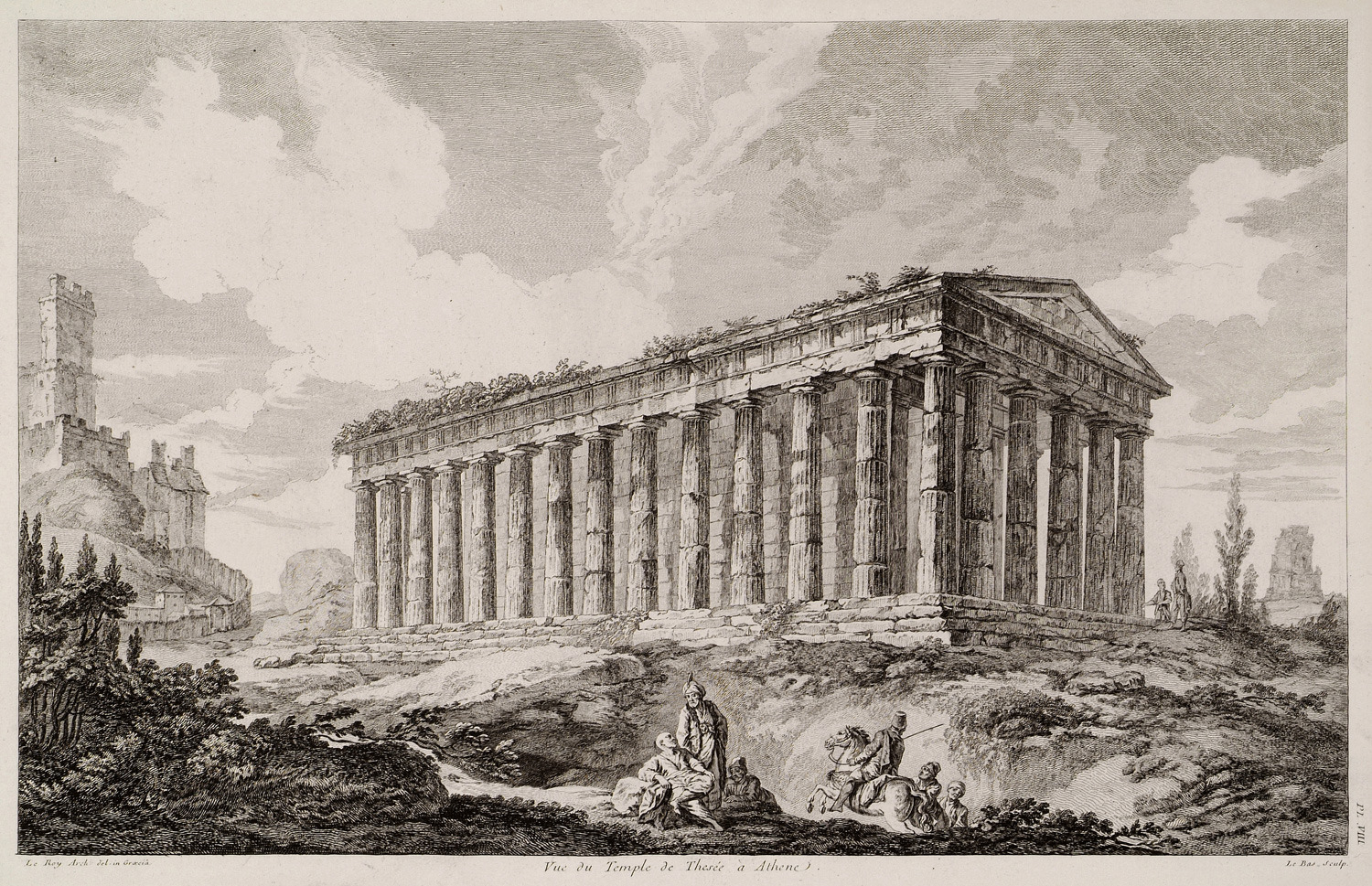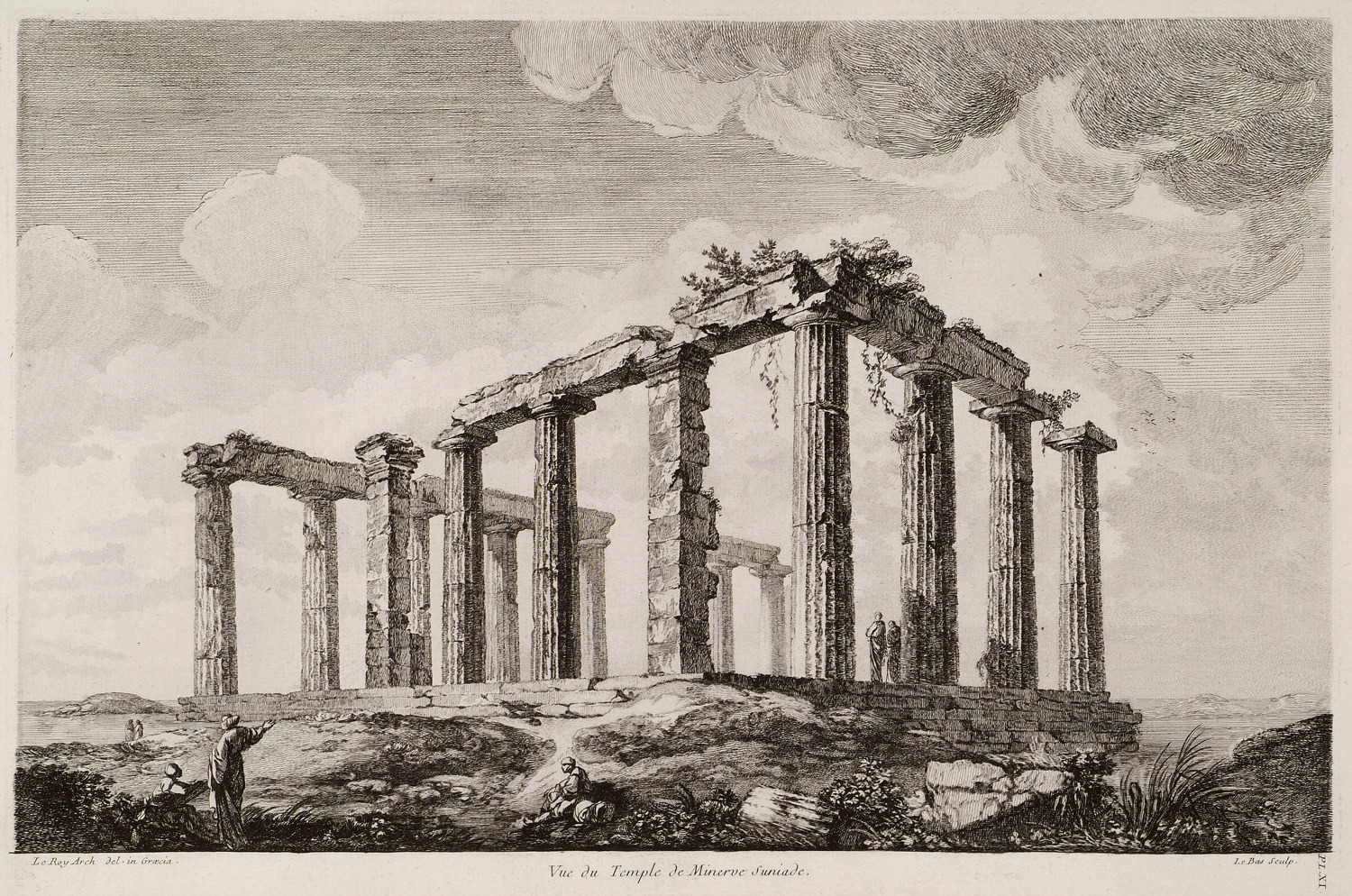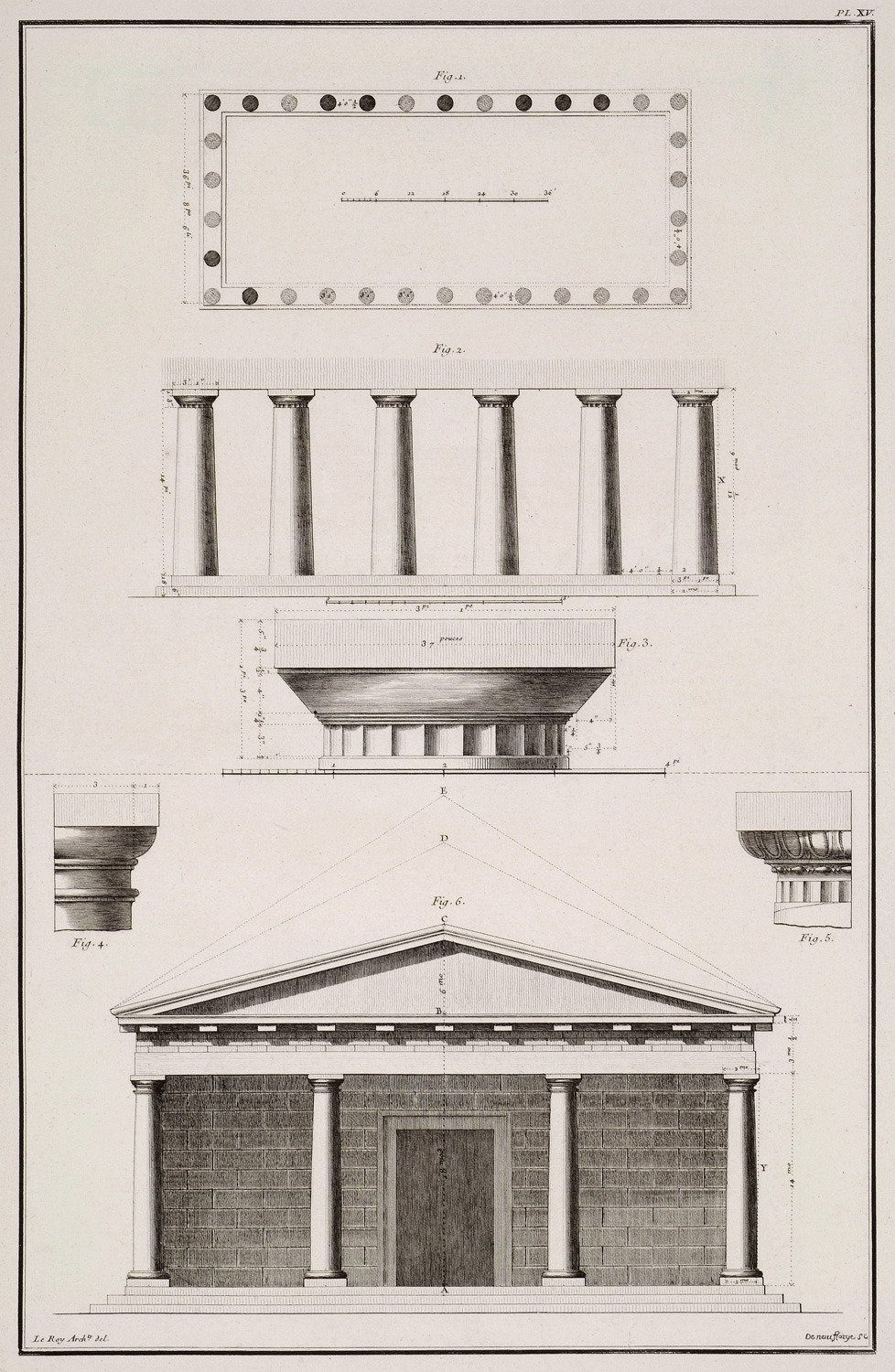Ancient temples (722 Subjects)
The Temple of Olympian Zeus, Athens: Plan of the temple, of which only those parts are shaded that remain.
Temple of Olympian Zeus, Athens: A. The base of the external columns, and of that marked F, in Plate II proving it to have been an external column B. The base of the internal columns, of which the plinth is continued, and form a step entirely round the temple. C. The profile of the astragal at the top of the shafts of the columns drawn by the eye from below. D. Plan of a column, with its flutings. E. Profile of the external face of the external architrave. G. Part of the wall of the peribolus on the South side, shewing the angular buttress. H. Section of the same, shewing its inclination, with a buttress in profile.
The temple of Apollo in Ancient Corinth. In the foreground two men on horseback and two women promenading. A small party of card players.
Temple of Apollo, ancient Corinth: Fig. 1: Elevation of what is supposed to have been the flank of the temple. The modern wall between the columns is inserted in this elevation no measures of the column which formed a part of the pronaos have been found. Fig. 2: Plan of the temple.
Temple of Apollo, ancient Corinth: Fig. 1: Capital and architrave of the columns with the step. There were six drops under each triglyph, but all of them broke off, for which reason they could not be measured nor drawn. Fig. 2: Annulets, or listels under the ovolo, full size.
Plan of Doric columns and elevation of Doric colonnade together with entablature, possibly from the Temple of Apollo, Delos.
Plans of the temples of Zeus and Heracles at Agrigento, Sicily. Map of the site.
North east view of the temple of Apollo Epicurius at Bassae, near Phigalia.
Plan of the Temple of Apollo at Bassae.
Elevation of the the front of the Temple of Apollo at Bassae (reconstruction).
Temple of Apollo at Bassae: Plans of the shaft, capital of the column, entablature. Section plan and bottom view of the entablature.
Temple of Apollo at Bassae: Fig. 1: Section through the frieze and cornice. Fig. 2, 3, 4: represent the section and elevations of the tiles and ante-fixae, which were of marble. [...] Fig. 5: Section of the raking cornice of the pediment. Fig. 6: The ornament of the sima more at large.
Temple of Apollo at Bassae. Details of the Doric capitals. Fig. 1: Capital of the Doric order of the peristyles to a larger scale. [...] Fig. 3: Annulets to the full size. Fig. 4: In this ouline are shewn the general principles which appear, on most occasions, to have directed the Greeks in the composition of their Doric capitals. Fig. 5: Capital of the pronaos and posticum. Fig. 6: Details of the annulets and necking of the less order to the full size. Fig. 7: Capital of the antae with the architrave of the order of the pronaos.
Temple of Apollo at Bassae: Longitudinal section through the posticum and opisthodomus of the temple.
Temple of Apollo at Bassae. Details of the Ionic order of the interior. Fig. 1: Plan of the one of the attached Ionic columns with the various projections of the mouldings of the base. Fig. 2: Elevation of the preceding figures. [...] Fig. 3: Elevation of the front of the lower frustum and base of the Ionic columns. Fig. 4: Section to the fourth of the original size of the torus of the base, by which is shewn the peculiar section of the bottom of the flute. Fig. 5: Plan of three of the flutes at large. Fig. 6: Capital and upper part of the shaft. Fig. 7: Plan of the flutes at large. Fig. 8: Plan of the top of the capital. Fig. 9: Detail of the apothesis, fillet and astragal. Fig. 10: Perpendicular section through the eye of the volutes.
Temple of Apollo at Bassae. Corinthian order and other details: Fig. 1: Base of the Corinthian order. Fig. 2: Profile of the torus traced from the original. [...]
Temple of Apollo at Bassae: The Lacunaria.
Temple of Hephaestus (Thiseion), Athens: Plan of the lacunaria.
Temple of Hephaestus (Thiseion), Athens. Details of the Capital of the Opisthodomos: Fig. 1: Elevation of the capital to a scale of two inches to a foot. 2. Section of the same to half the full size. 3. The annulets to the full size.
Doric entablature from the north side of the wall of the Acropolis of Athens: Elevation, section plans and bottom view.
Plan of the Temple of Kardaki, Corfu. A denotes two wells.
Temple of Kardaki, Corfu: Elevation of the front towards the sea.
Temple of Kardaki, Corfu. Details of the Order. Fig. 1: Elevation of the capital of the column and a section of the entablature restored from existing fragments, with the exception of the frieze. Fig. 2: Plan of the capital. Fig. 3: Plan of the fluting of the upper diameter, full size. Fig. 4: Shews the construction of the tympanum. Fig. 5: Shews the thickness of the tympanum stones. Fig. 6: Section of the end on one of the terra cotta tiles with which the roof was covered, full size.
Temple of Kardaki, Corfu: Fig. 1: Section of the capital, half the full size, Fig. 2: Section fo the moulding of the corona, half the full size. Fig, 3: Section of the internal moulding of the architrave, half the full size. Fig. 4 and 5: Elevation and section of an ornament supposed to have been in the frieze of the ambulatory, full size. Fig. 6: Section of the ornament in the true position.
Temple of Kardaki, Corfu: Fig. 1: Transverse section of the temple as it now remains. Fig. 2: Section from east to west. Fig. 3: Section and plan of a Doric capital found in a ruined church within the French lines. It has very much the character of the capital of the pseudodipteral and hexastyle temples at Paestum.
1: Views and plans of Egyptian, Jewish and Phoenician temples. 2: Views and plans of Greek and Roman temples. 3: Views and plans of Christian temples.
Plan of the Acropolis of Athens.
View of the Temple of Hephaestus (Thiseion), Athens.
View of the Temple of Poseidon, Sounio.
Plan of Doric temple. Elevation of the peristyle. View and section plan of the capital. Elevation of the front.


